35 Places to Commemorate the 100th Anniversary of the End of World War I
These cemeteries, memorials and museums around the world remember the millions who died in the Great War
/https://tf-cmsv2-smithsonianmag-media.s3.amazonaws.com/filer/9c/ac/9cace119-728f-4703-8688-56848f6dd62e/notre-dame-de-lorette-img_2693.jpg)
From 1914 to 1918, the wealthy and powerful Western nations and empires that had come to dominate the globe wrecked themselves in a paroxysm of destruction unmatched in any previous era. Empires toppled, millions died and the world changed forever. In the wake of the First World War, nations sought appropriate forms of public mourning and commemoration to grieve and honor their dead. Among allies and foes, there was an overwhelming desire that such a war never be repeated. “Anything rather than war! Anything! … No trial, no servitude can be compared to war,” wrote French novelist and pacifist Roger Martin du Gard in 1936.
Today, memorials, monuments and museums dedicated to WWI can be found in all of the combatant countries. From a rose garden in Ireland to vast war cemeteries built on or near the major battlefields, these sites ensure that the memory of the war and the sacrifices of those who lost their lives will never fade.
AUSTRALIA
ANZAC Memorial
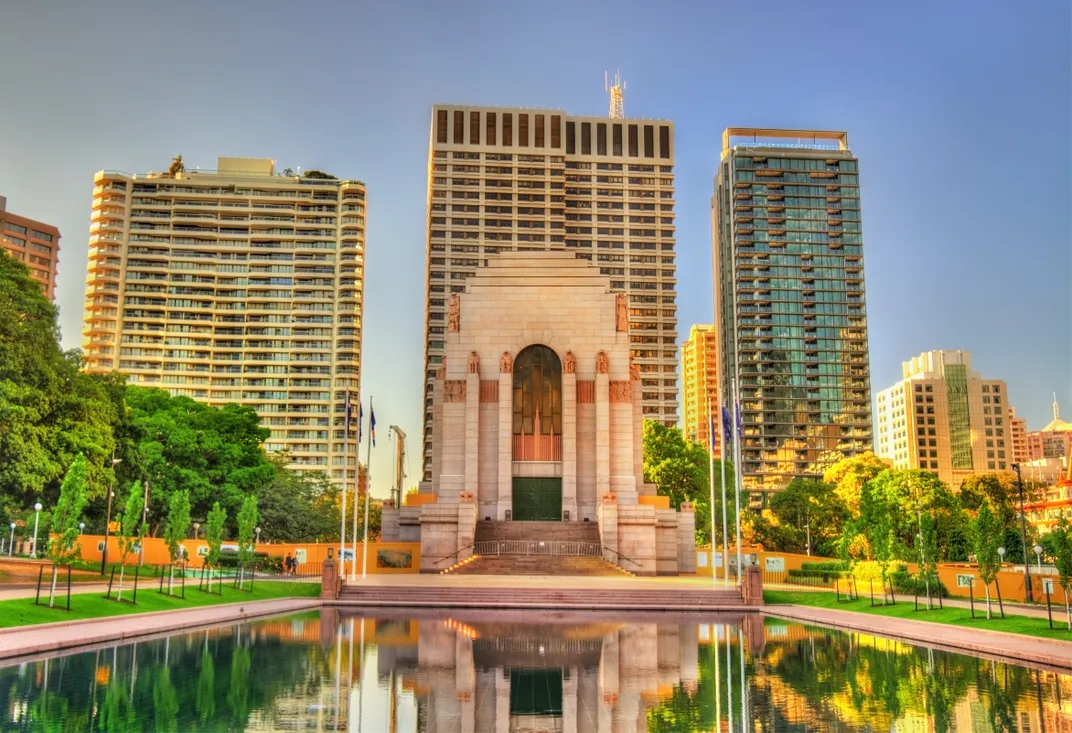
Set in Sydney’s Hyde Park, this is New South Wales’s principal war monument. Designed in an art deco style by C. Bruce Dellit, it is made of granite, with statuary and bas-reliefs created by the artist Raynor Hoff. The buttresses on the outside of the building are each topped by a mournful figure, while the bas-reliefs depict scenes from Australian campaigns at Gallipoli and the Western Front. Ceremonies are held at the memorial on Remembrance Sunday (11 November) and Anzac Day (25 April).
Hyde Park, Sydney
Australian War Memorial
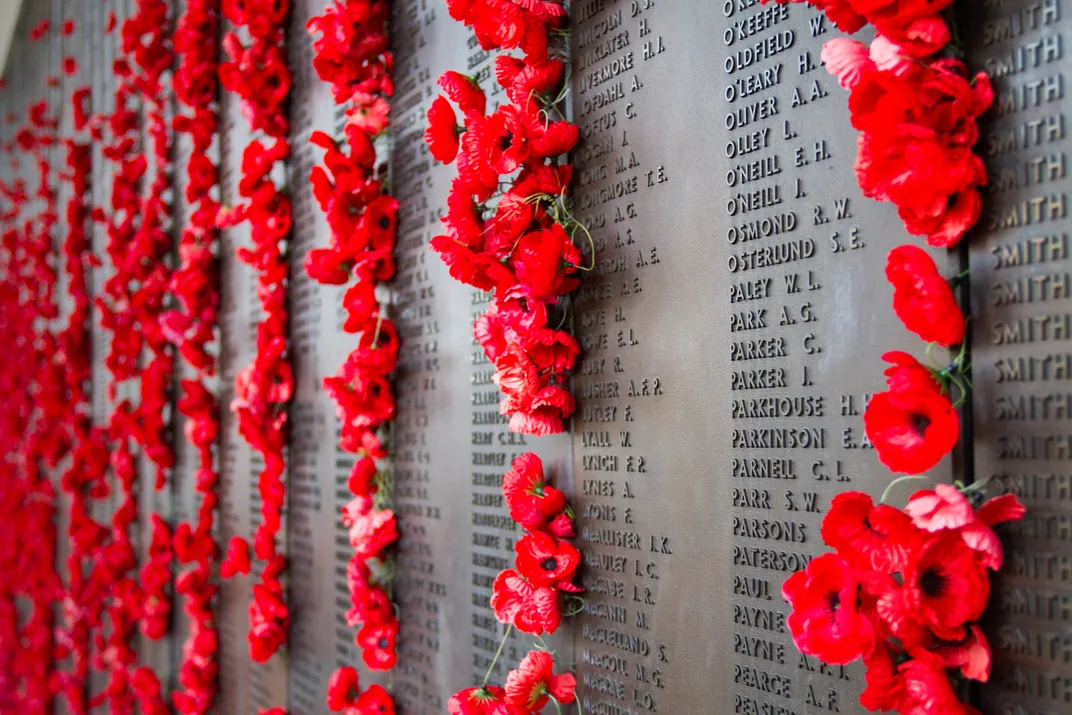
The national monument to Australia’s war dead was built in the aftermath of World War I, though it serves to commemorate Australian service personnel killed in all conflicts. The main parts of the memorial are the Commemorative area (which includes the Hall of Memory), Anzac Parade and the Sculpture Garden. In the museum on the ground floor of the main building, the Anzac Hall, a recently added high-tech exhibition space, includes “Over the front, the Great War in the air”, a permanent display telling the story of aerial combat in World War I. It includes five original aircraft from the war, memorabilia, personal testaments and a sound and light show.
Remembrance Park, Canberra
Shrine of Remembrance
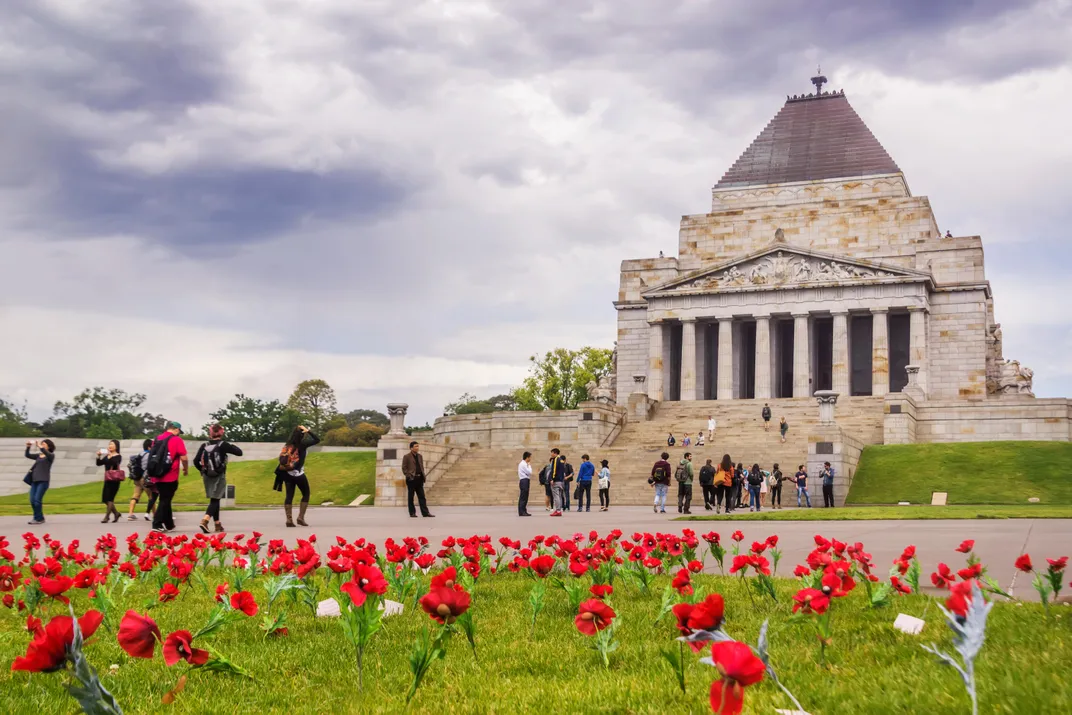
Built to remember Victoria’s war dead of 1914–18, this is one of Australia’s great memorials. Inspired by the mausoleum to Mausolus, King of Caria, at Halicarnassus in Turkey, the shrine was inaugurated in November 1934. The sanctuary contains the Stone of Remembrance inscribed with the words “Greater Love Hath No Man”, designed so that a shaft of sunlight (or artificial light) falls on the word “Love” held at 11am on 11 November each year. More than 120 ceremonies are held at the shrine each year.
St Kilda Road, Melbourne
BELGIUM
Flanders Field American Cemetery and Memorial
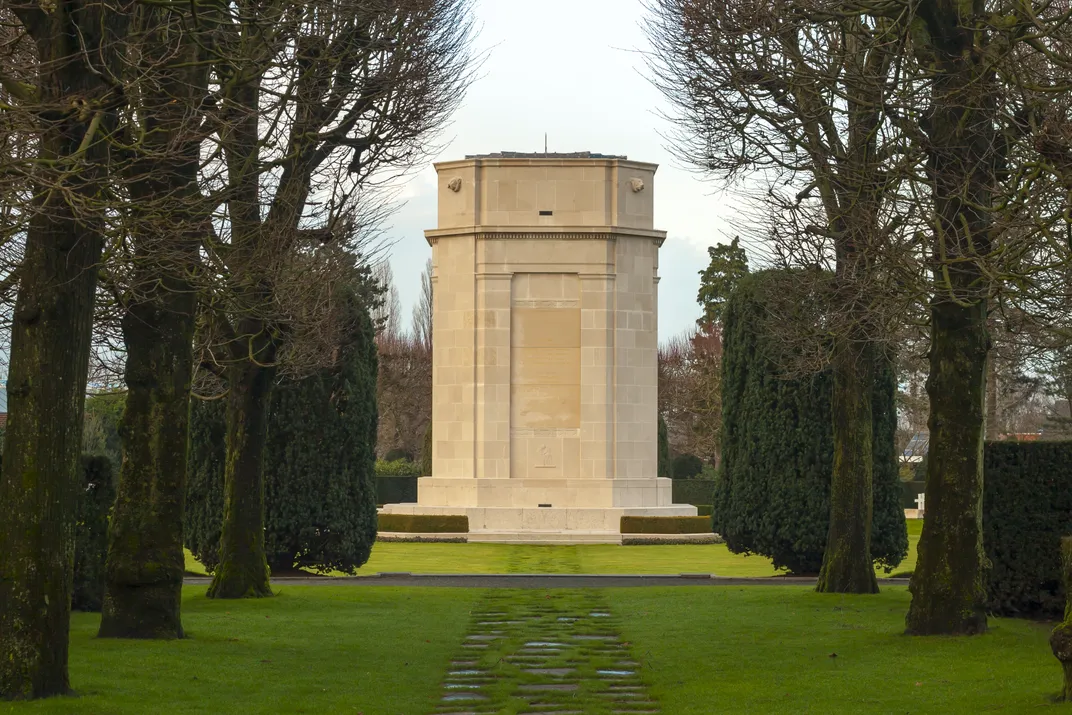
The only American Battle Monuments Commission cemetery in Belgium, this commemorates the American contribution to the war on the Western Front. Smaller and more intimate than most of the war cemeteries in Belgium, it consists of 368 burials, with the headstones arranged around a central chapel. Many of the casualties interred here came from the US 91st Division, killed in fighting in this area in October and November 1918. The chapel itself includes 43 names on the Walls of the Missing – rosettes mark the names of soldiers whose remains have been subsequently recovered and identified.
Southeast of Waregem, along the Lille-Gent autoroute E-17
In Flanders Field Museum
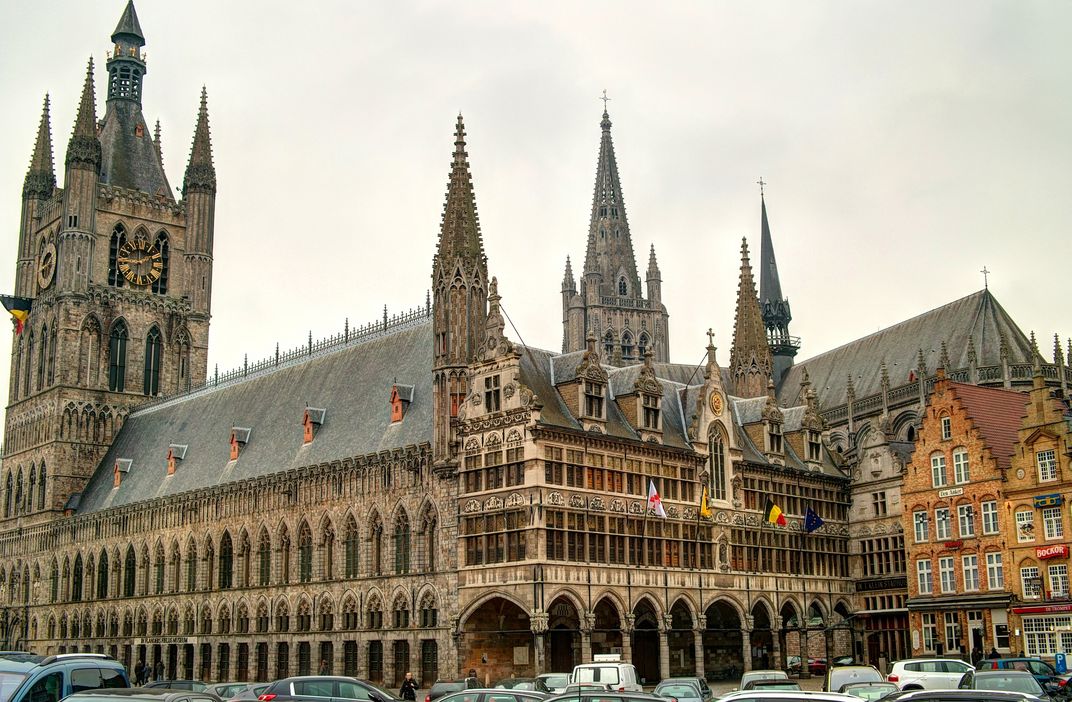
The Cloth Hall on the Market Square in the center of Ieper (Ypres), site of three of the war’s most significant battles, has been turned into a museum housing major collections of World War I artifacts and documents. The exhibitions and interactive audio-visual displays cover the invasion of Belgium in 1914 and the first few months of the war, with particular emphasis on the war around Ypres and how war affected the town. A documentation center includes extensive original trench maps, a photographic library and postcard collection and contemporary newspaper reports.
Visitors can also climb up to the belfry for views over the town and the sites of the surrounding battlefields. Access to the center is free, although some collections can be viewed only by appointment.
Lakenhallen Grote Markt 34, Ieper
Langemark German War Cemetery
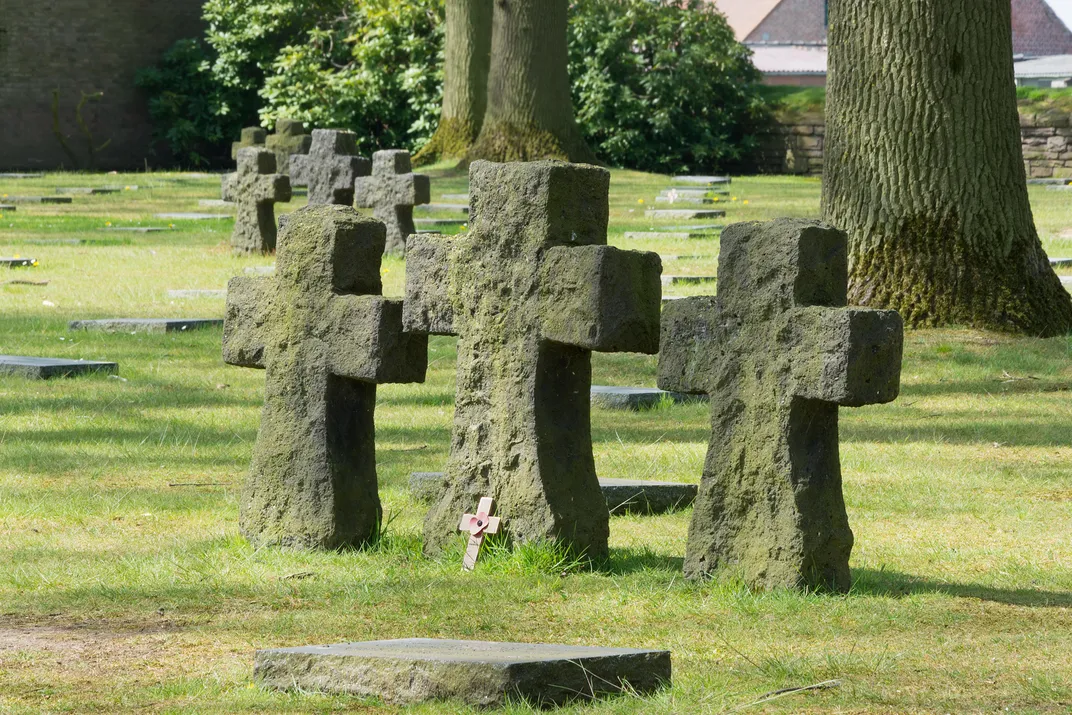
An official German War Graves Commission site, the Langemark Cemetery contains more than 40,000 burials of soldiers recovered between 1915 and the 1930s. The cemetery was officially designated German Military Cemetery 123 in 1930 and was inaugurated two years later. Of the soldiers buried in the cemetery 24,917 lie in mass graves. The German Students’ Memorial annex lists the names of 3,000 students killed in the Battle of Langemarck (part of the First Battle of Ypres) in 1914. Known as the Kindermord (Massacre of the Children), in Germany, First Ypres included many young German volunteers, most of whom had only received two months’ military training. In the cemetery stands a sculpture of mourning soldiers by Emil Krieger. Also of note is a basalt-lava cross on a small mound, marking one of the three original battlefield bunkers.
North of Langemark village, 6km (4 miles) northeast of Ieper
Menin Gate
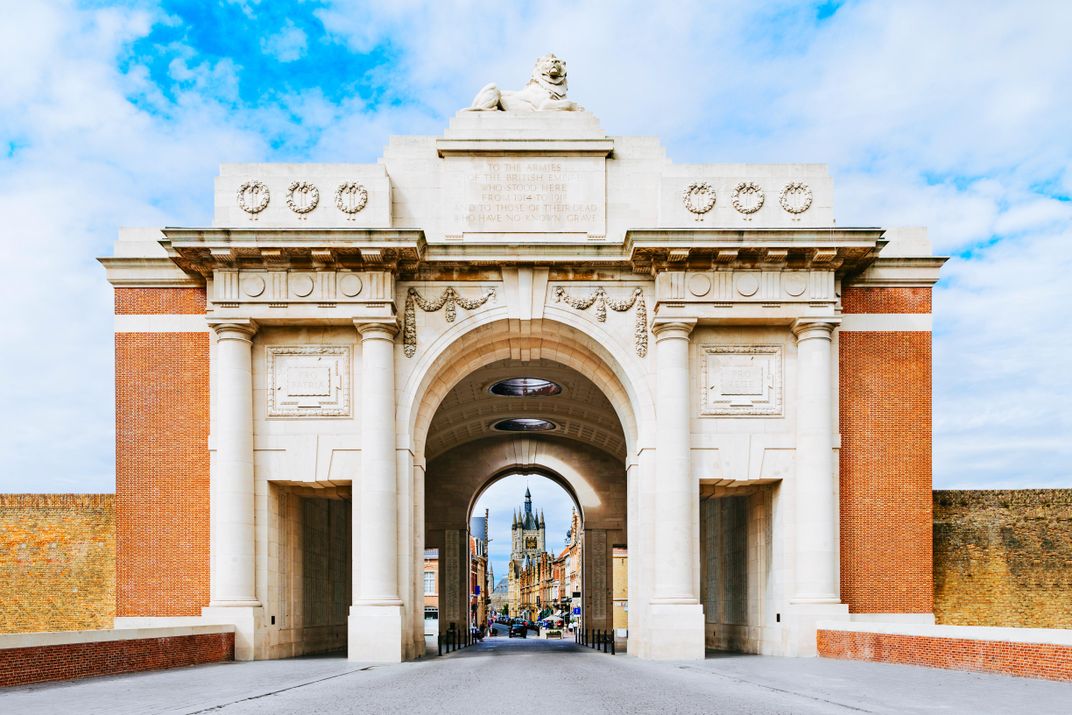
One of the most visited sights on the Western Front, the Menin Gate Memorial in Ypres was designed by Reginald Blomfield and unveiled in 1927. It marks the point where most British soldiers marched out of the town to the battlefields of the Ypres salient. The walls of the Hall of Memory are inscribed with the names of 54,896 British and Commonwealth soldiers killed in the Ypres salient before 16 August 1917. Each night at 8pm, the traffic is stopped and the Last Post is played under the arches of the memorial.
Meensestraat, Ieper
Messines Battlefield and Memorials
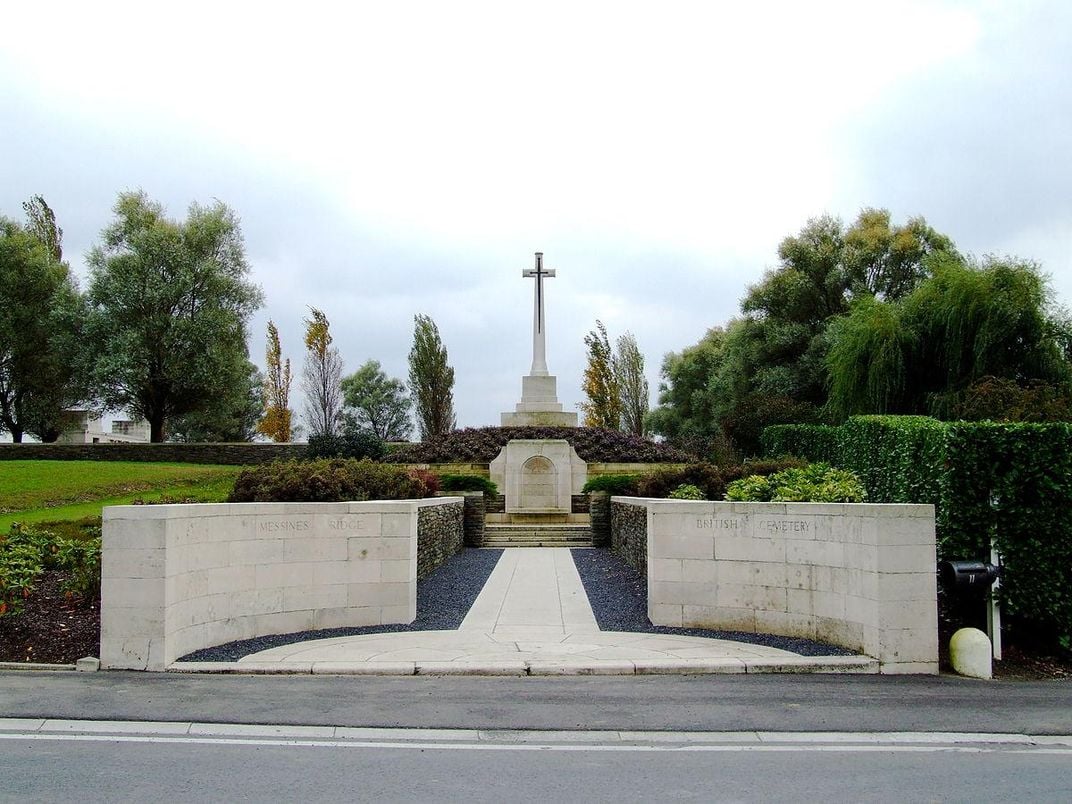
Around the village of Wystchaete, the St Eloi, Peckham Farm, St Yvon, Kruisstraat and Spanbroekmolen craters bear testimony to the 19 enormous mines detonated beneath the German trenches at Messines. An information board in the village gives directions to the craters, and there are more than 1,000 burials in the Wytschaete Military Cemetery, a short walk from the main square. A smaller cemetery, the Lone Tree Cemetery, near Spanbroekmolen contains 88 burials, mainly of soldiers from the Royal Irish Rifles.
Memorials of the battle include one to the London Scottish regiment on the N365 between Wytschaete and Messines, marking the spot where they first went into action. In Mesen (Messines) itself, which was completely destroyed in the battle, there are the New Zealand Memorial Park and the Messines Ridge Military cemetery. It was in Mesen’s church (rebuilt) that Adolf Hitler reputedly received treatment for combat injuries in 1914. To the south of Mesen is the modern Island of Ireland Peace Park, opened in 1998, to commemorate Irish soldiers killed during World War 1
Around Mesen (Messines)
Passchendaele Battlefield
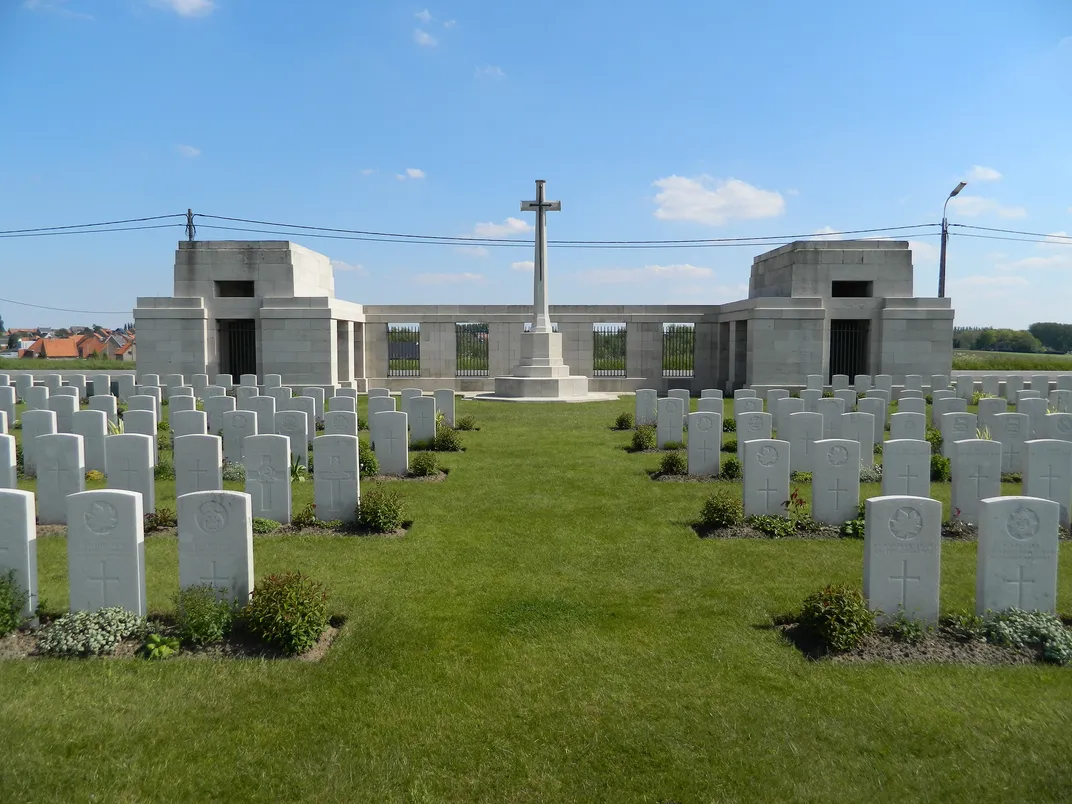
Few battlefield areas evoke the tragedy of the Ypres salient more than Passchendaele, around the modern village of Passendale. The area is littered with memorials to individual battles and regiments, including the Canadian Memorial at Crest Farm, the 85th (Nova Scotia Highlanders) Battalion Memorial, and memorials to French soldiers and the British Seventh Division, both at Broodseinde.
Cemeteries in the area include the Passchendaele New British Cemetery, containing 2,101 British and Commonwealth burials, and the vast Tyne Cot cemetery to the southwest of Passendale. In Zonnebeke, the Passchendaele Memorial 1917 Museum contains a large display of military artifacts.
Various Locations in and around Zonnebeke and Passendale
Royal Museum of the Armed Forces and of Military History
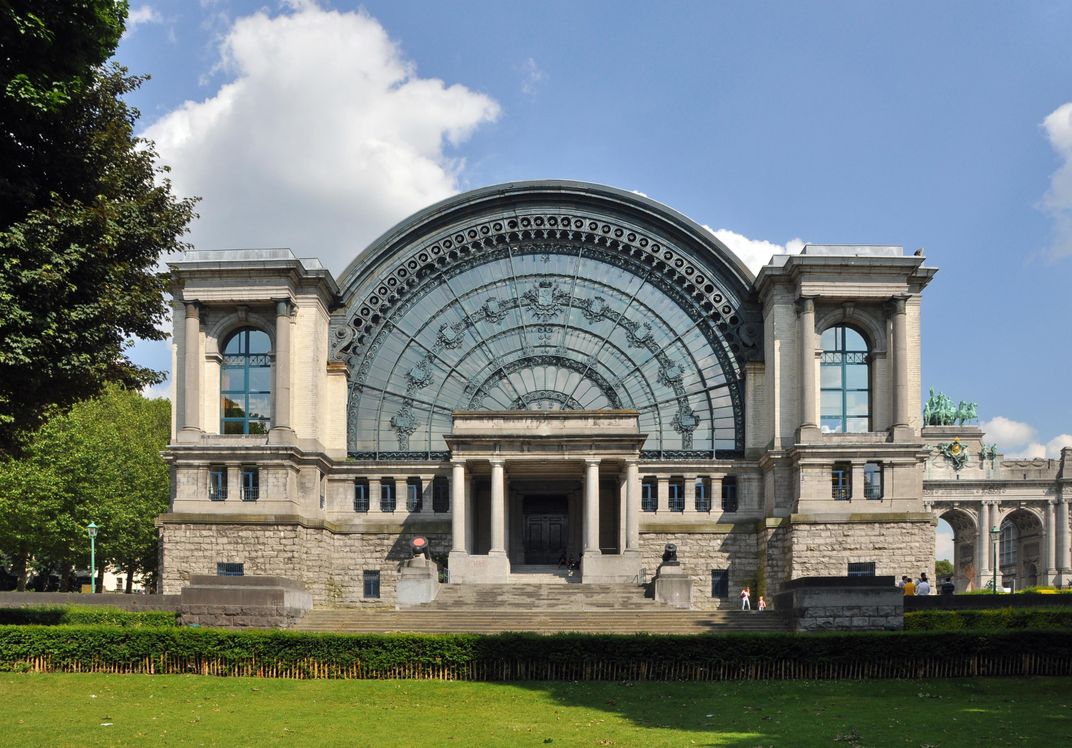
This museum houses collections relating to the whole of Belgian military history, not just World War I, but it includes a large collection of World War I artifacts, documents and memorabilia in a permanent 1914–18 exhibition. Exhibits include fi rearms, artillery pieces, uniforms, armored vehicles and even a Fokker triplane.
Jubelpark 3, 1000 Brussels
St Julien Memorial
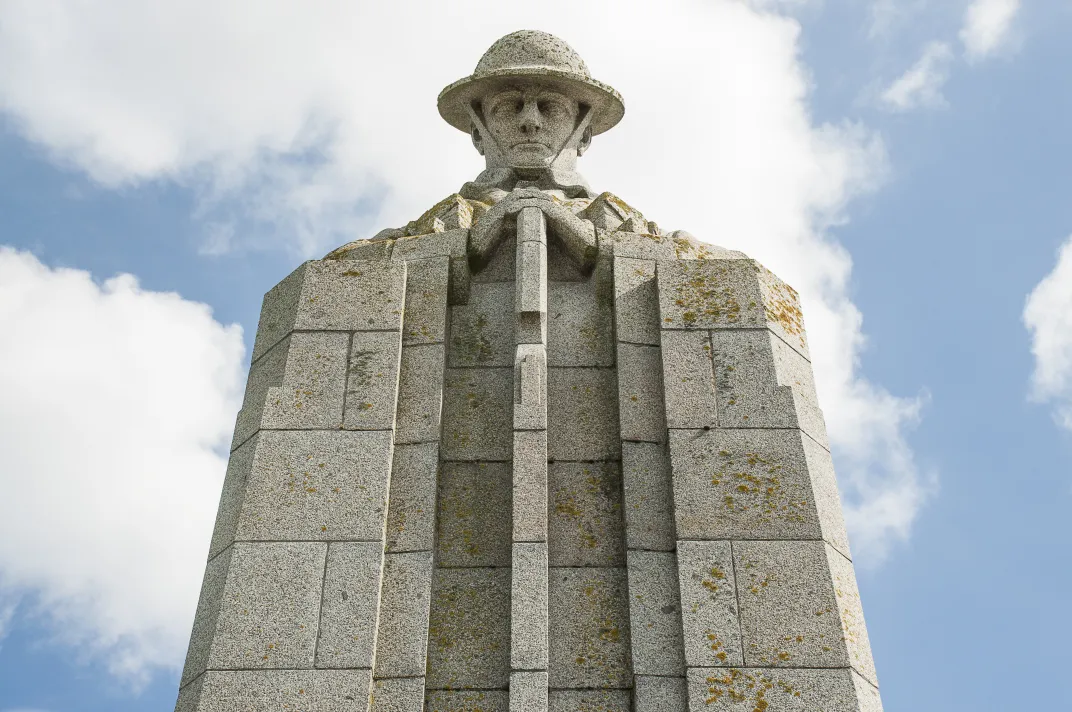
This granite memorial, designed by the Anglo-Canadian architect Frederick Chapman Clemesha, stands 11 m (36 ft) tall. Known as the Brooding Soldier, it features at its summit the head and shoulders of a Canadian infantryman, his head bowed in mourning. The memorial remembers the Canadian troops killed around St Julien during the Second Battle of Ypres. Many of the dead were killed by the first use of poison gas (chlorine) on the Western Front, as the memorial inscription attests: “This column marks the battlefield where 18,000 Canadians on the British left withstood the first German gas attacks on the 22–24 April 1915. 2,000 fell and here lie buried.”
7 km (4.3 miles) northeast of Ieper, off the N313 towards Roulers
Sanctuary Wood Cemetery and Museum Hill 62
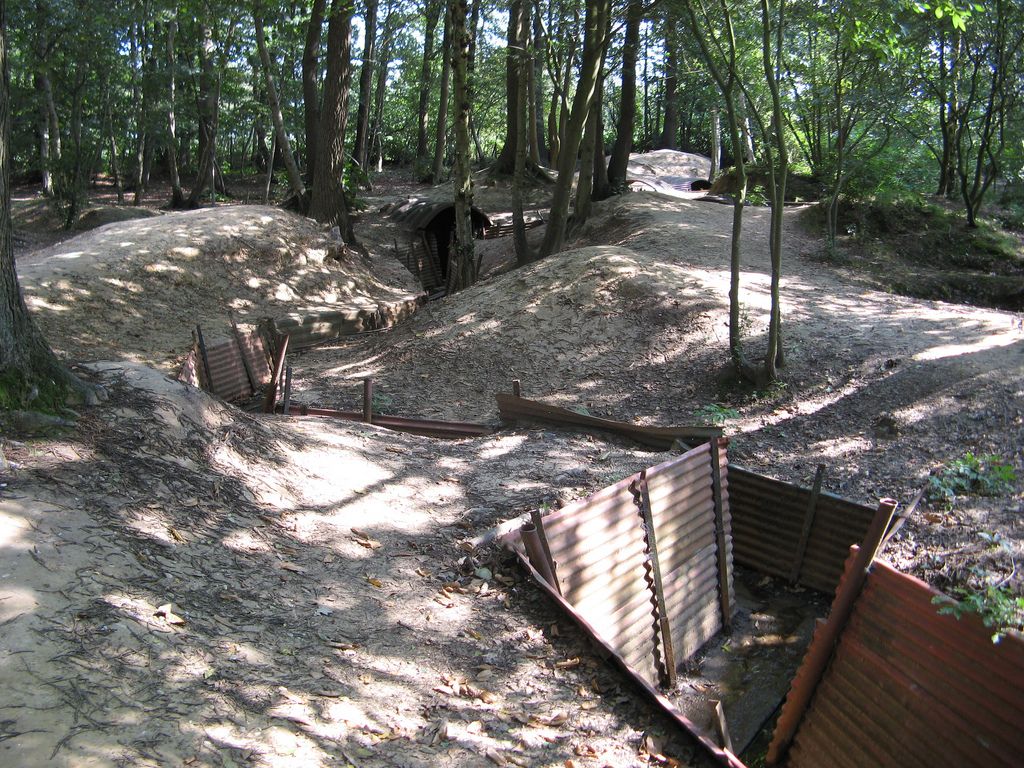
In 1914, Sanctuary Wood acted as a protective barrier between British and Commonwealth troops and the front line. During 1915–16, however, it was also swamped with heavy fighting, principally between Canadian and German forces.
Three Allied cemeteries were established in the area at the time. The remains of one of them formed the foundations for the present cemetery, designed by Sir Edwin Lutyens just after the war. During the 1920s and 1930s, the cemetery expanded with additions from the wider Western Front. Today, it contains 1,989 burials (spread over five plots), of which only 637 are identified.
Within a short distance of the cemetery is the Sanctuary Wood Museum Hill 62, a privately run institution. An extensive series of preserved trench lines, all open to walk through, can be seen outside the museum. Another feature of the Sanctuary Wood area is the Canadian Memorial at Hill 62, remembering the thousands of Canadians killed in futile battles to retake Hill 62 in June 1916.
5km (3 miles) east of Ieper town, off the N8
St George's Memorial Church
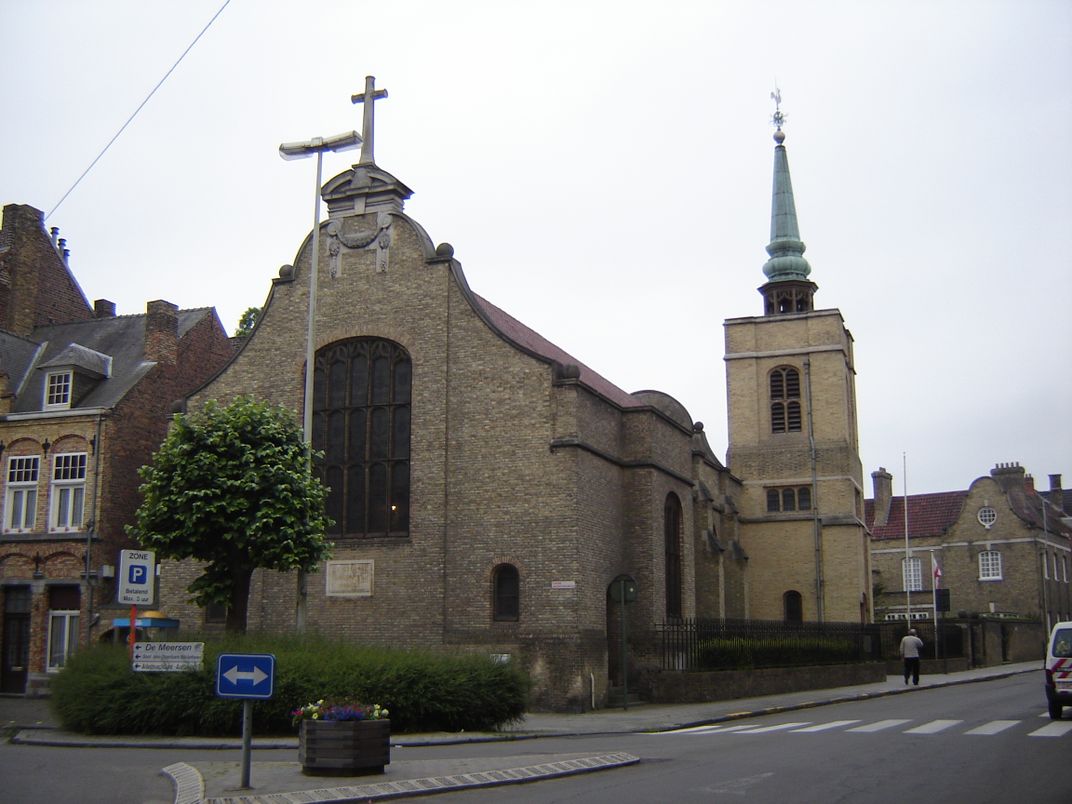
Field Marshal Lord Plumer, commander of the British Second Army in Flanders during the war, laid the foundation stone of St George’s Church in Ieper in 1927. The building opened for services two years later and is still an active place of worship today. Though the church was built primarily to remember the British and Commonwealth dead of Ypres – its stained glass, wall plaques, banners and kneelers reflect individual British regiments – it is now the memorial church for all those who died in battle in Flanders during both world wars.
Elverdingsestraat 1, 8900 Ieper
Tyne Cot Cemetery
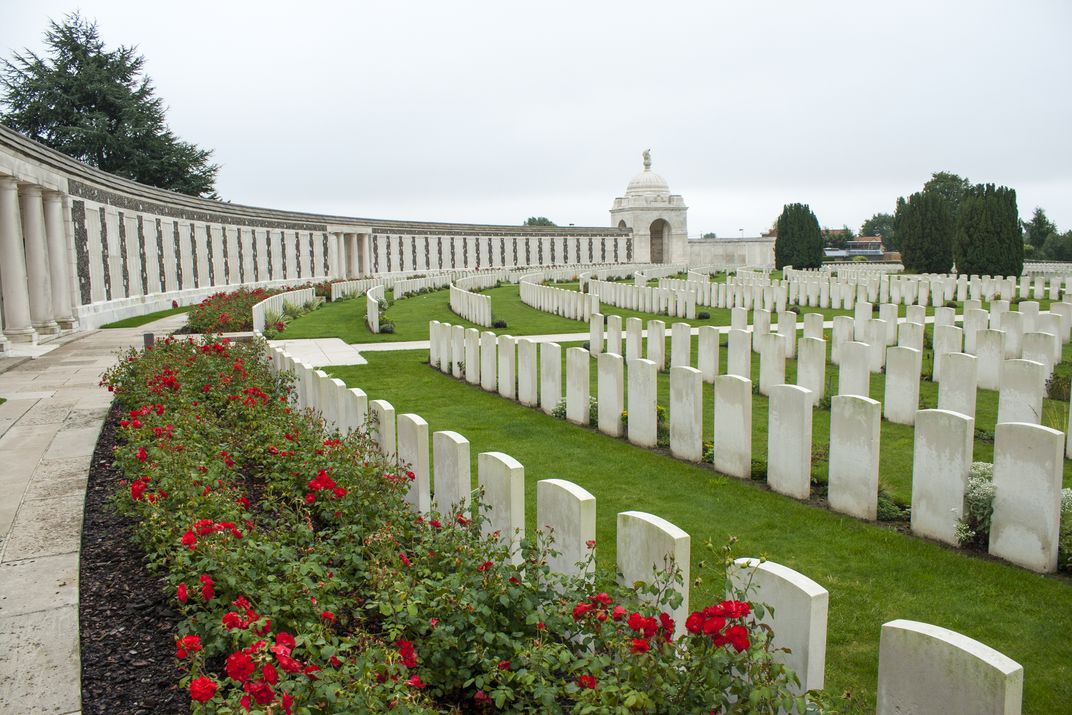
The largest British war cemetery in the world, Tyne Cot contains a total of 11,953 burials, mostly of British and Commonwealth troops but also including four German soldiers. The majority of the men buried here were killed during the Third Battle of Ypres in 1917. The name Tyne Cot is thought to have British origins. According to a local story, the Northumberland Fusiliers thought a barn on the ridgeline here looked like their cottages on the River Tyne, back home in Britain. Landmarks of the cemetery include the Cross of Sacrifice Monument and the curved Memorial to the Missing, listing the names of 35,000 soldiers with no known grave.
Southwest of Passendale, signposted off the N332 after passing east through Zonnebeke
Vladslo German War Cemetery
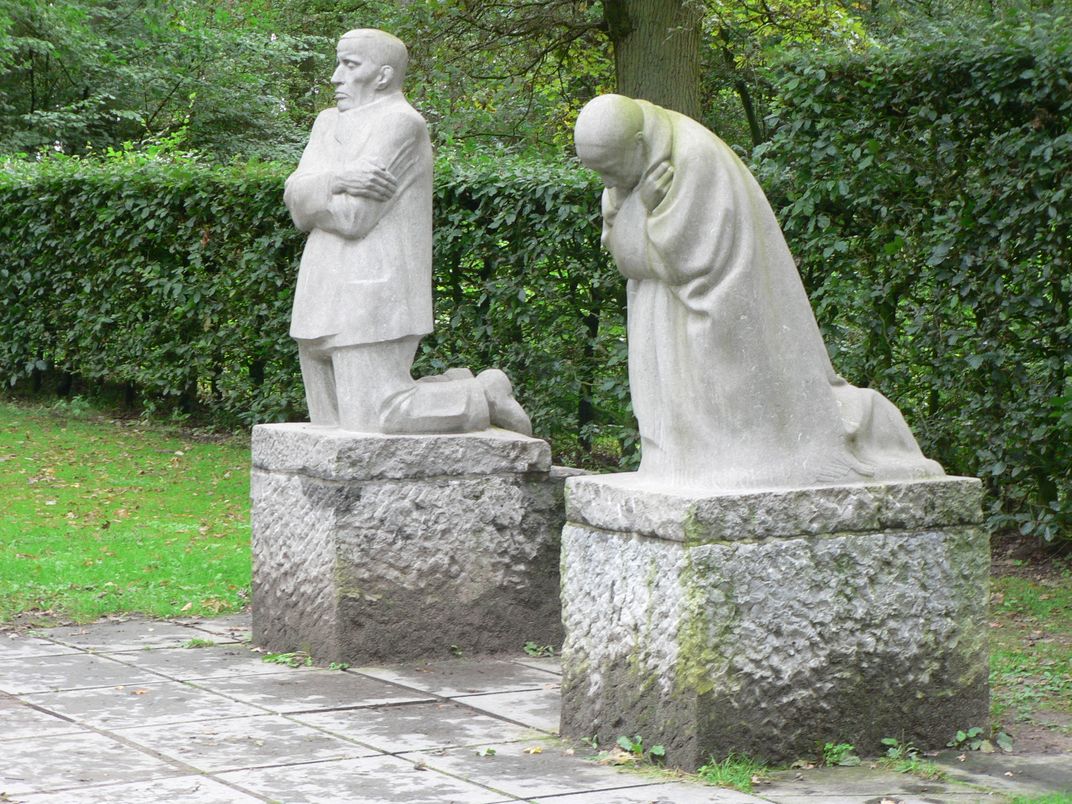
This German cemetery is the burial place for 25,644 soldiers, most of whom were moved here from other locations in the 1950s (the site was used as a combat cemetery from 1914). Although some headstones date from the time of the war, most were inscribed afterwards. Each of the flat granite slabs bears 20 names, with name, rank and date of death. The Grieving Parents, a pair of statues made by the German sculptor Käthe Kollwitz stand in the cemetery. Kollwitz’s son died at First Ypres in October 1914.
3km (1.8 miles) northeast of Vladslo, signposted from N363 from Beerst
Ypres Salient Battlefield
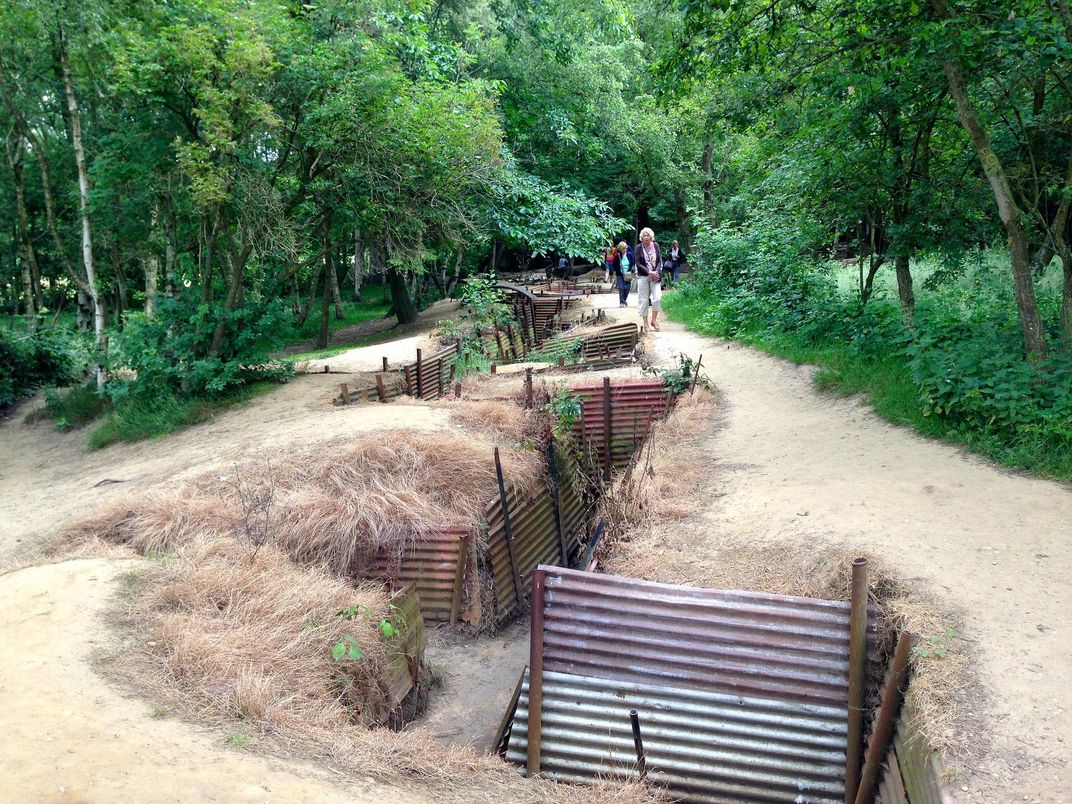
After the Somme, the area around the Ypres salient, centering on the modern town of Ieper, is the most frequented destination for battlefield visitors. Within the town itself are the Menin Gate and St George’s Memorial Church, both moving memorials to those lost around Ypres, and the In Flanders Field Museum. Outside the town are many other sites of interest, including more than 140 military cemeteries and military burial grounds. British cemeteries alone contain 40,000 unidentified graves. The cemeteries are tended by the British, Belgian, French and Italian war graves commissions.
Among a number of interesting museums around Ieper are the Sanctuary Wood Museum Hill 62, the Hooge Crater Museum, the Memorial Museum Passchendaele (at Zonnebeke), and the Messines Historical Museum (Mesen). Poperinge, 13 km (8 miles) to the west of Ieper was a center for British troops heading to the front. The town’s Talbot House Museum served as a club house for British Army troops. Opened by army Chaplain Philip Clayton as an alternative place of relaxation to the more debauched places in town, it was open to all ranks. Officers going on leave could also spend the night here before catching their train back to Britain.
Neuville-St-Vaast exit from A26 autoroute, follow D49
FRANCE
Douaumont Ossuary and Verdun Memorial
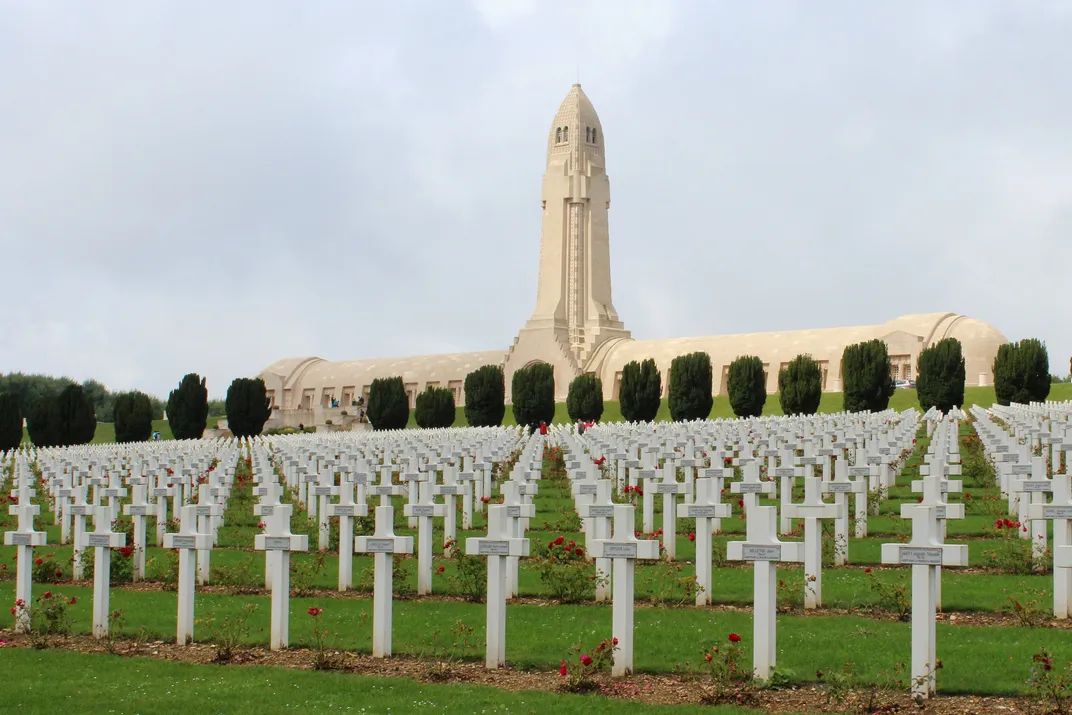
This is arguably one of the most powerful memorials on the Western Front. Work on a provisional ossuary – a building where bones of the dead are kept – began in 1920 to provide a sanctuary for the hundreds of thousands of bones that were scattered throughout the Verdun battlefield site. Work on a permanent ossuary began in 1920, and bones were transferred here from the battlefield from 1927. The ossuary cloister contains the bones of 130,000 unidentified soldiers, arranged according to the area of the Verdun battlefield in which they were found.
Douaumont
Étaples Military Cemetery
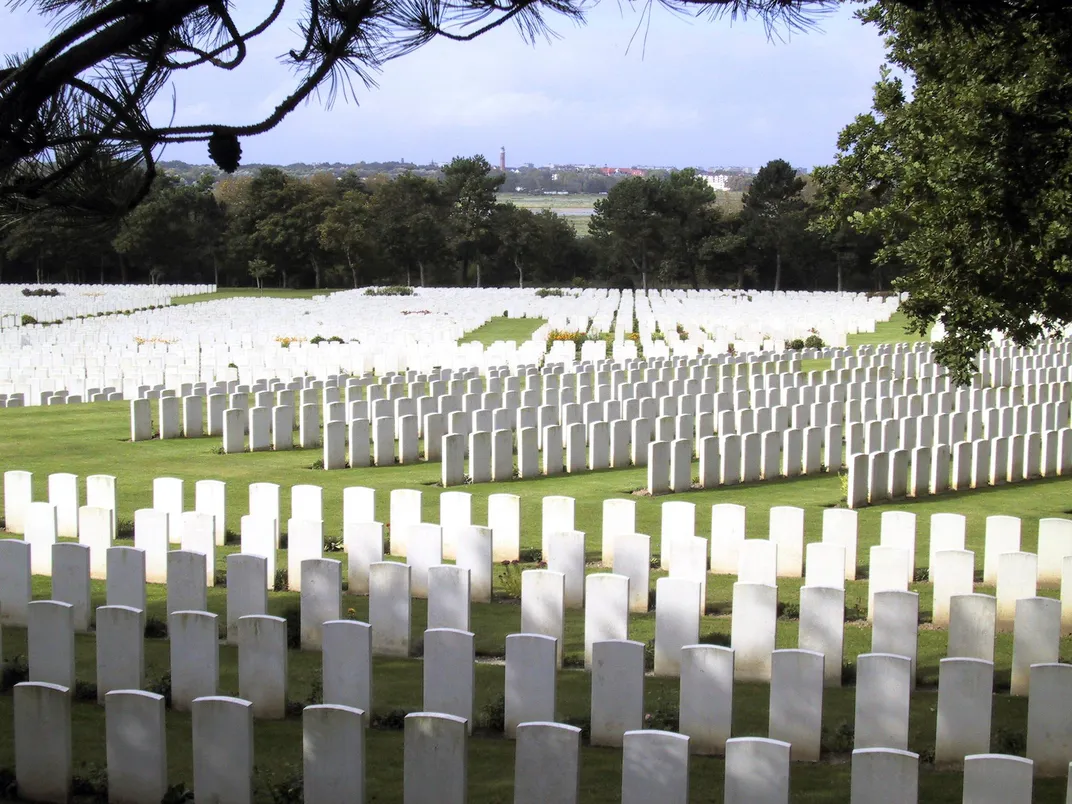
The many British military camps and hospitals around Étaples meant that the area required a large British and Commonwealth cemetery. In use from May 1915, it contains 10,733 burials from World War I, including those of 35 unknown soldiers, as well as burials from World War II.
Between Boulogne and Etaples
Fricourt German War Cemetery
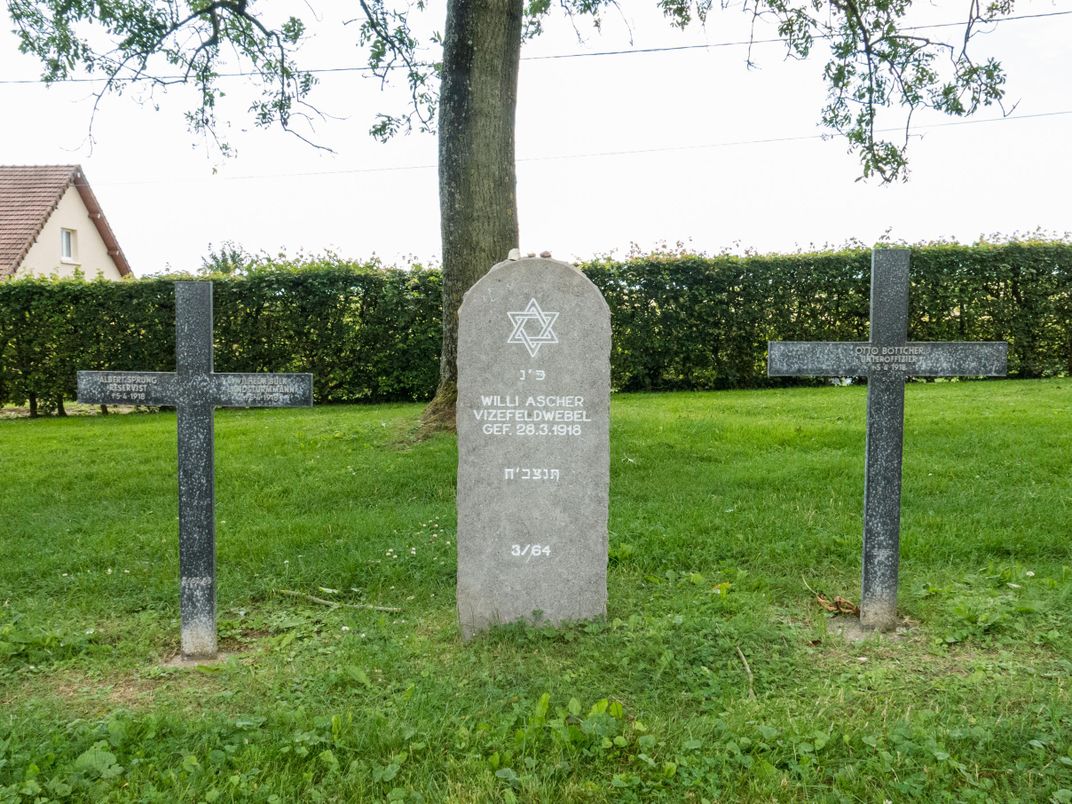
Although not the largest German war cemetery in the Somme area – Vermandovillers has 26,000 burials – Fricourt contains 17,027 German soldiers, about 10,000 of whom were killed during the Somme battles of 1916 (the burials date from 1914 to 1918). Only 5,057 of the burials have individual graves; the other 11,970 are contained in four mass graves.
Near Fricourt, the Somme
Meuse-Argonne American Cemetery and Memorial
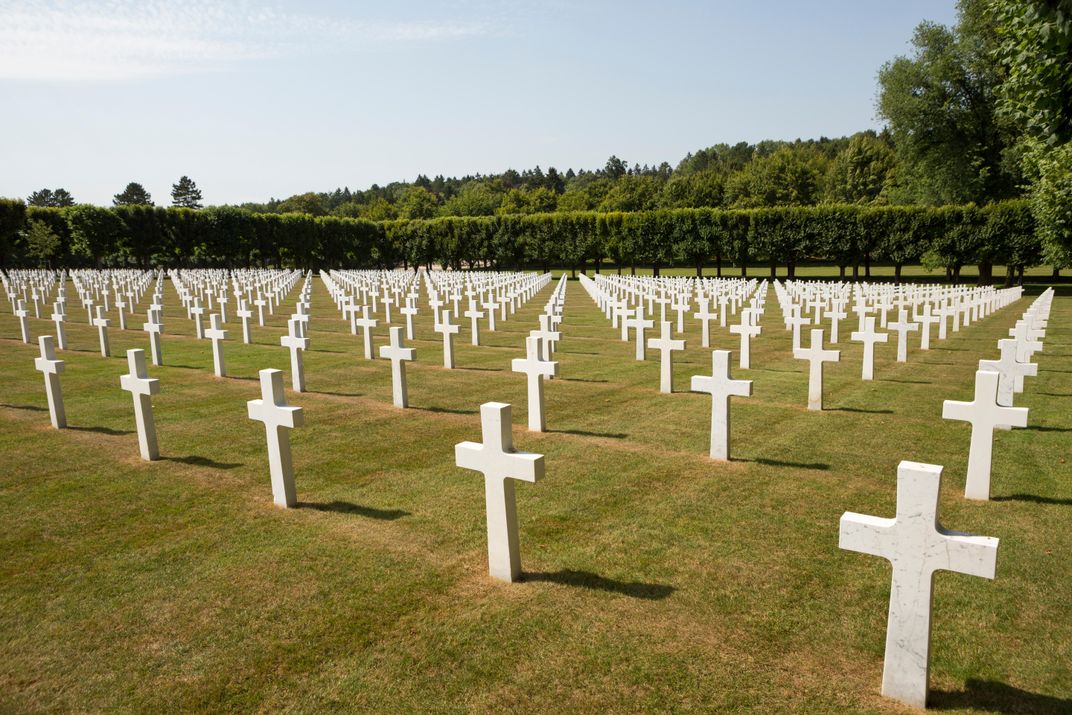
This is the largest US military cemetery in Europe, with a total of 14,246 servicemen buried over 52 hectares (130 acres) of grounds. In the memorial chapel, panels are inscribed with the names of 954 soldiers missing in action (the bodies of those with rosettes against their names were eventually discovered and identified). Staff members at the visitor center provide guidance on navigating the cemetery and locating particular graves.
Romagne-Sous Montfacuon
Musée De L’Armée
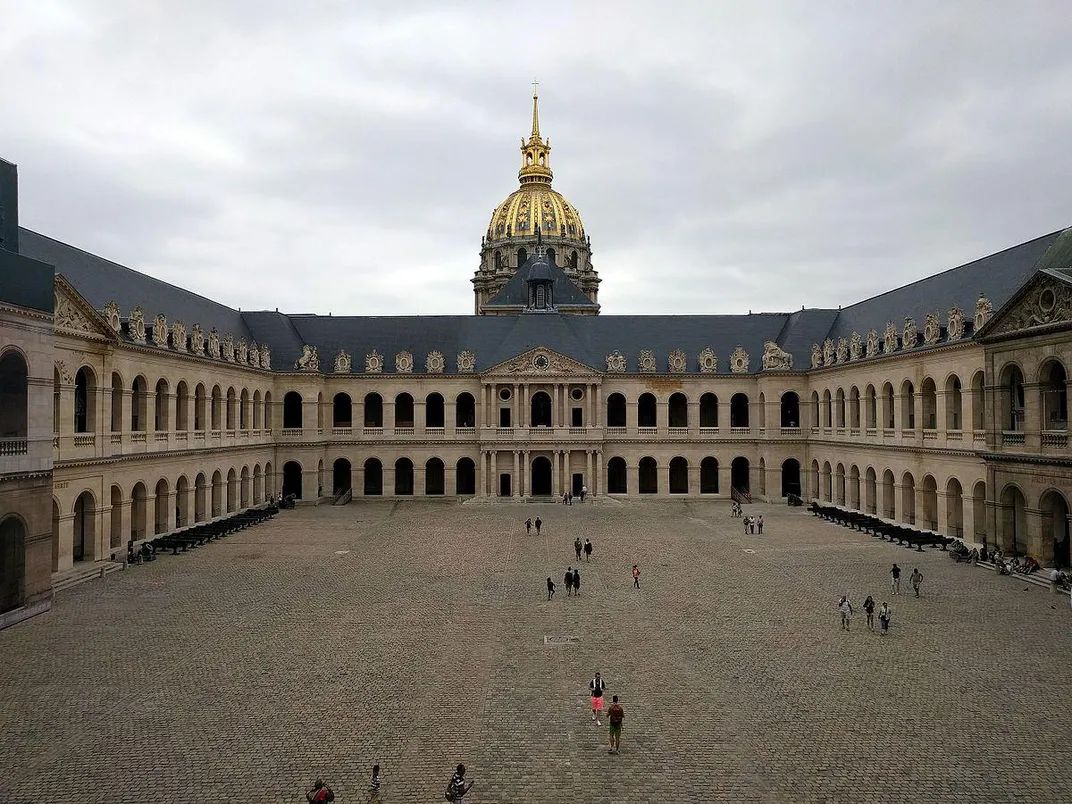
One of the world’s largest military museums, the Musée de l’Armée in Paris contains more than 500,000 artifacts from every period of French military history. Its World War I section contains large collections of uniforms and weaponry.
Les Invalides, Paris
Neuville-St-Vaast German War Cemetery
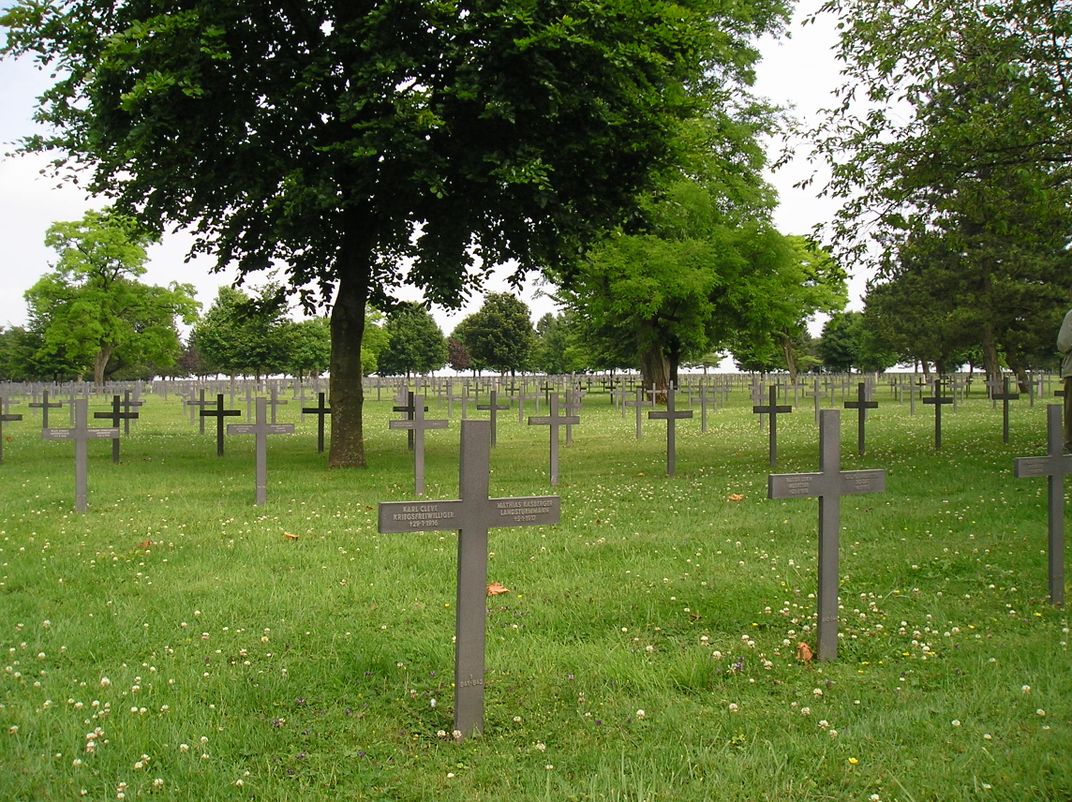
Established by the French in 1919 to hold German war dead, this German War Graves Commission cemetery, also known as La Maison Blanche, is the largest in France. A sea of metal crosses, laid out during the 1970s to replace earlier wooden versions, it contains 44,533 burials, with four soldiers in each grave. There is also a mass grave containing the remains of more than 8,000 soldiers.
Near Arras
Notre Dame De Lorette
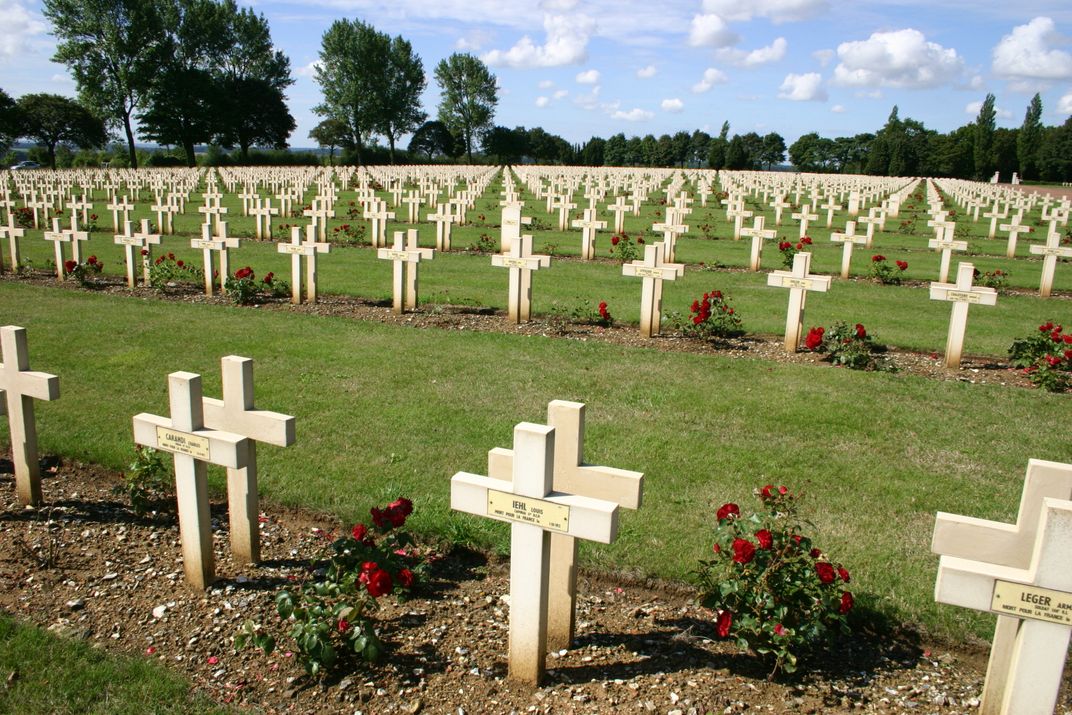
Religious buildings have occupied this ridge to the northwest of Arras since the 18th century, but the basilica and ossuary currently on the site were built in 1921 as memorials to the French soldiers who died in the Artois area during the battles of 1914, 1915 and 1917. The cemetery later became a national necropolis, and the ossuary contains the remains of some 23,000 unidentified soldiers from both world wars as well as French conflicts in Algeria and Indochina. The basilica, designed by Louis-Marie Cordonnier, is adorned with colorful mosaics. Surrounding the basilica and ossuary, the cemetery covers 13 hectares (32 acres) and contains 45,000 burials, the bulk of them from World War I. Behind the cemetery is a military museum, with dioramas, uniforms, artillery pieces, photographs and a reconstructed trench and bunker system. Outside the museum, original trenches have been redug.
Ablain-Saint-Nazaire, near Arras
Somme Battlefield
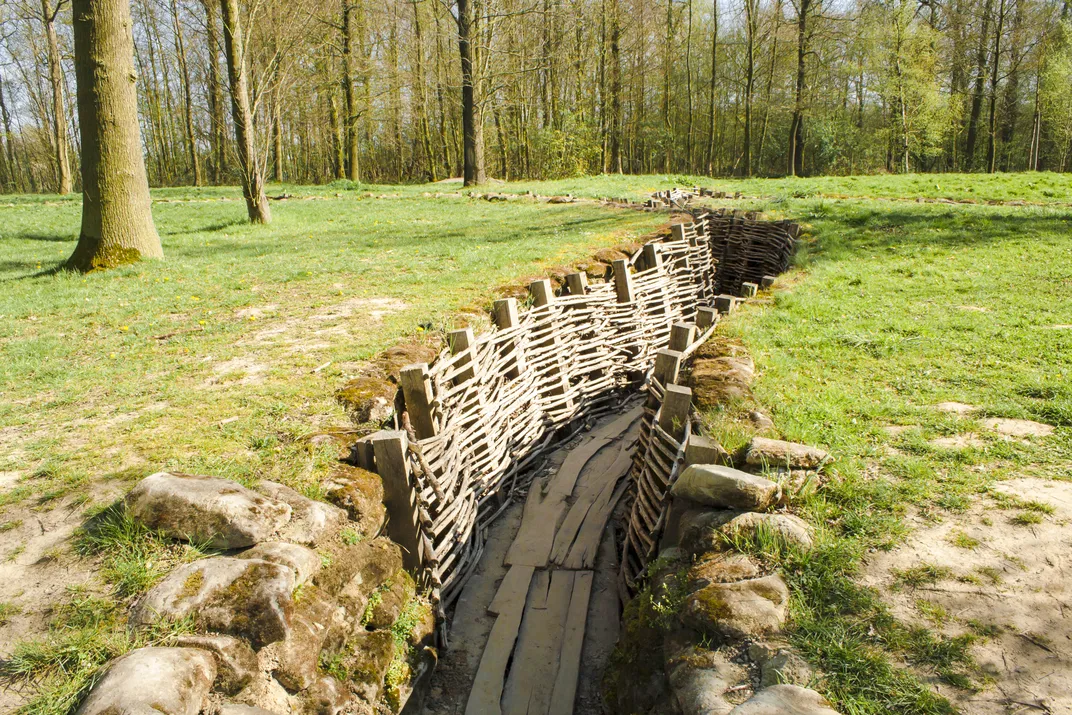
The site of one of the greatest and most costly battles in human history, the Somme region is one of the main centres of military tourism. To get the most out of a visit, it is advisable to buy a guidebook to the battlefield sites or join a tour run by one of the specialist companies operating in the area. The officially recommended “Tour of Remembrance” takes in the town of Albert (including the Somme 1916 Trench Museum and the CWGC-maintained Albert Communal Cemetery), Beaumont-Hamel, Thiepval, Ovillers-la-Boiselle (site of the Lochnagar crater), Longueval (including the New Zealand Memorial and Pipers Memorial) and Peronne. All these places are packed with places of interest, including cemeteries, military relics, museums and memorials. Munitions and artifacts are regularly dug up in the Somme countryside (remember not to touch any munitions you might find). The best way to get around the battlefield privately is by car, as many of the sites are easily accessible from the A29 or A1 motorways.
The Somme
Thiepval Memorial to the Missing
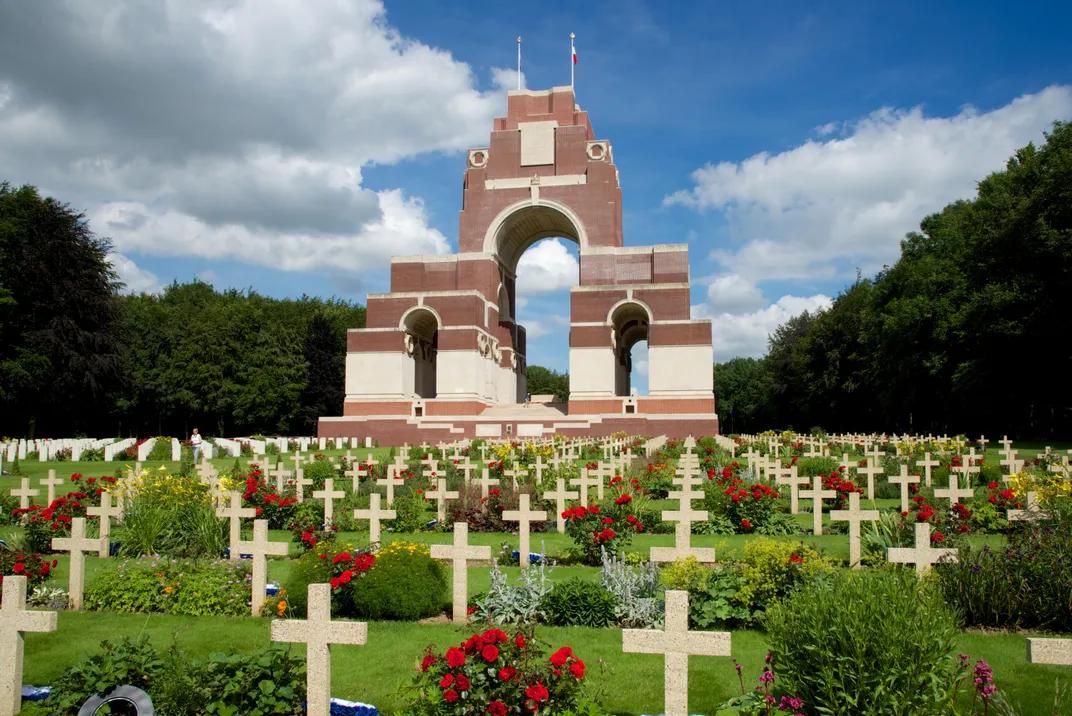
This huge memorial in Thiepval was designed by Sir Edwin Lutyens and opened by Edward, Prince of Wales in 1932. Inscribed on its surfaces are the names of 73,357 Allied soldiers who died in the Somme area between 1916 and 1918 but have no grave. A commemorative ceremony is held here on 1 July every year.
Thiepval, the Somme
INDIA
India Gate
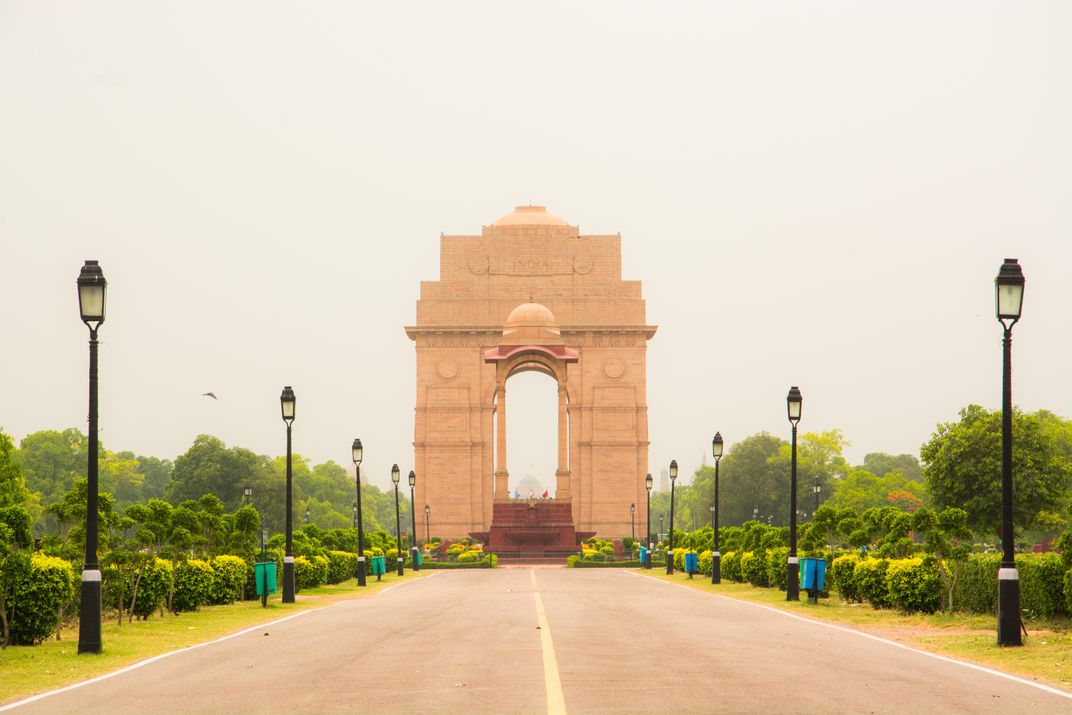
Designed by Sir Edwin Lutyens and built between 1921 and 1931, the India Gate in Delhi commemorates all Indian soldiers who died in World War I and the Third Afghan War of 1919. Originally called the All India War Memorial, the arch is 42 m (137 ft) tall and inscribed with the names of more than 70,000 men. Beneath the arch is the Amar Jawan Jyoti (The Flame of the Immortal Warrior) and also the Tomb of the Unknown Soldier. The cenotaph is surrounded by four flaming torches that are kept constantly lit.
Located on Rajpath, Delhi
IRELAND
Irish National War Memorial Gardens
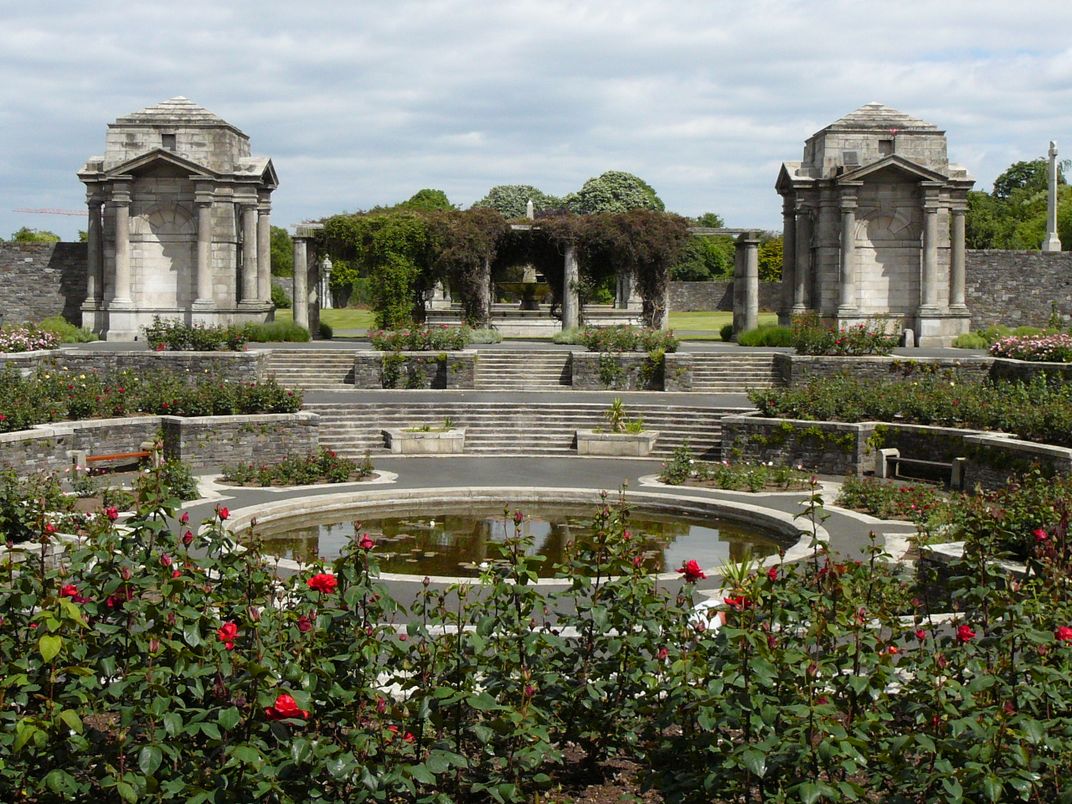
Built to remember the 49,400 Irish soldiers who died in World War I, these gardens were designed by Sir Edwin Lutyens in the 1930s. The park covers 8 hectares (20 acres) and includes a sunken rose garden and two book rooms, containing the Rolls of Honour listing the names of the dead. The site also features the Ginchy Cross, a wooden monument built by soldiers of the Irish 16th Division and originally erected on the Somme battlefield. Inscribed on the floor of the domed temple on the bank of the River Liffey, at the northern end of the garden, is an extract of “War Sonnet II: Safety” by Rupert Brooke.
Islandbridge, Dublin
ISRAEL
Ramleh CWGC Cemetery
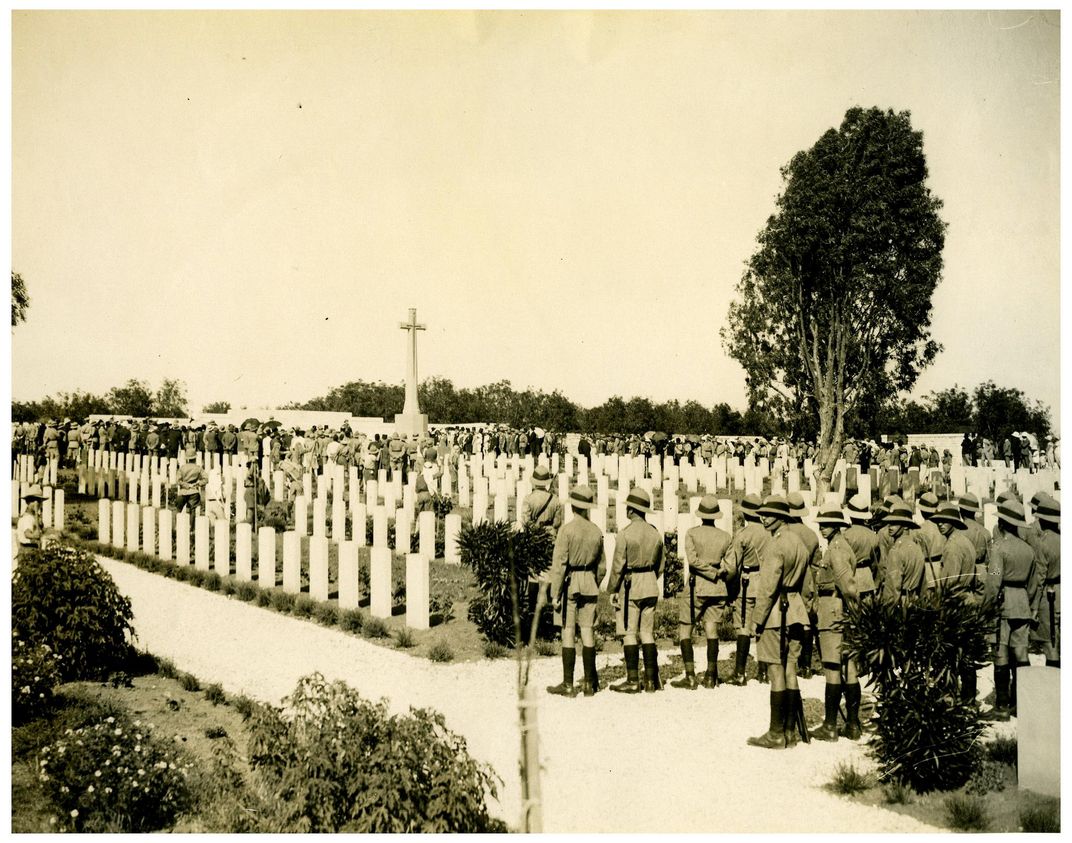
Established in December 1917 to serve the field hospitals set up in the area, the cemetery in Ramleh (now Ramla) was later augmented by graves moved here from other cemeteries in Palestine and Israel. Ramleh was occupied by the First Australian Light Horse Brigade from November 1917. The cemetery contains 3,300 Commonwealth burials from World War I, plus nearly 1,200 burials from World War II and a number of other burials of non-Commonwealth and non-combat personnel. There is also a memorial to Commonwealth, German and Turkish servicemen buried elsewhere in Palestine and Israel, in cemeteries that are no longer maintained. The memorial was built in 1961.
Near Ramla
ITALY
Sacrario Militare Di Redipuglia
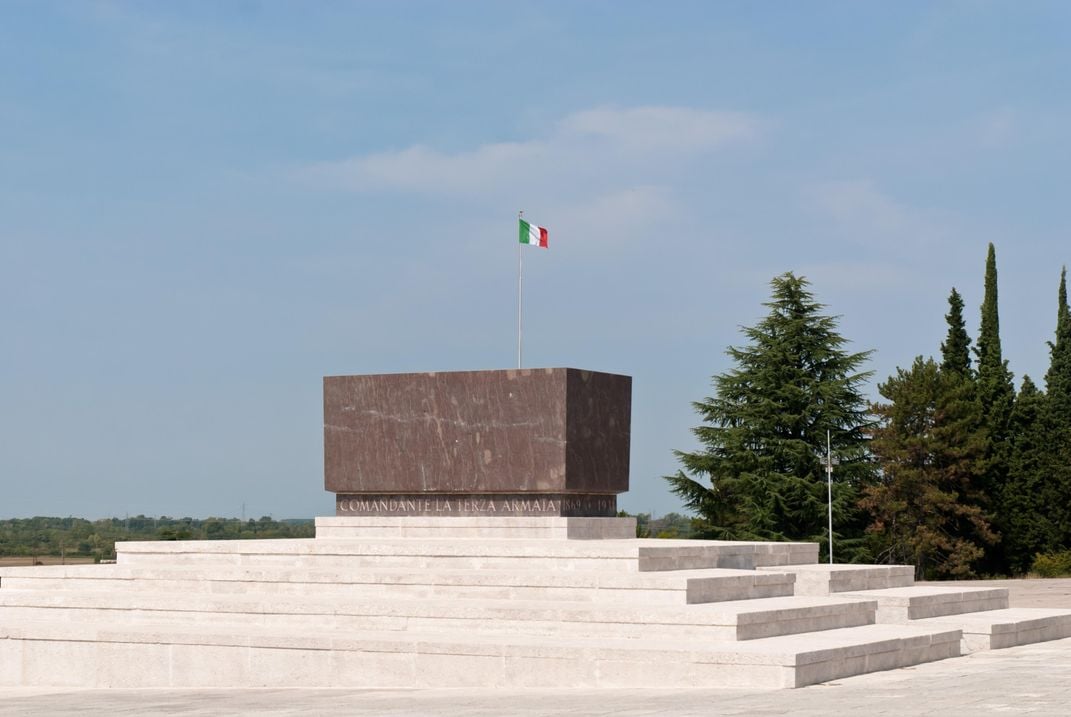
Built under Mussolini and opened in 1938, the Sacrario Militare Di Redipuglia is a military shrine in the north of Italy, on the slopes of Monte sei Busi, at the eastern end of the Isonzo front. It holds the remains of more than 100,000 Italian soldiers killed during World War I – the 22 steps to the top of the shrine alone contain the remains of 40,000 soldiers. The shrine also contains the tombs of five generals and the Duke of Aosta, the commander of the Third Army. The site includes a chapel and a museum containing a poignant collection of artifacts from the Italian front and some original trench fortifications.
Monte Sei Busi
ITALY/SLOVENIA
Isonzo Front Battlefields

In terms of battlefield tourism, the Isonzo front is often overlooked in preference for battlefields in France and Belgium, but it is just as rich in heritage and places of interest. The challenges for touring the Isonzo front are the distances involved and the arduous terrain. A typical route might run from Kranjska Gora in northwest Slovenia down to Duino on the Adriatic coast in northeastern Italy, although there are many other options. Highlights include the Soca Valley, containing numerous positions and gun emplacements in the rockface; the Vrsic pass, built by Russian prisoners in 1916; and Kluze fortress with its military tunnels. At Kobarid (Caporetto during World War I) in Slovenia, it is possible to walk along former trench lines. The town also has an excellent museum devoted to the ferocious battles along the Isonzo front, with large-scale maps, models of the terrain, artifacts and photographs.
Along the Slovenian/Italian border
NEW ZEALAND
Auckland War Memorial Museum
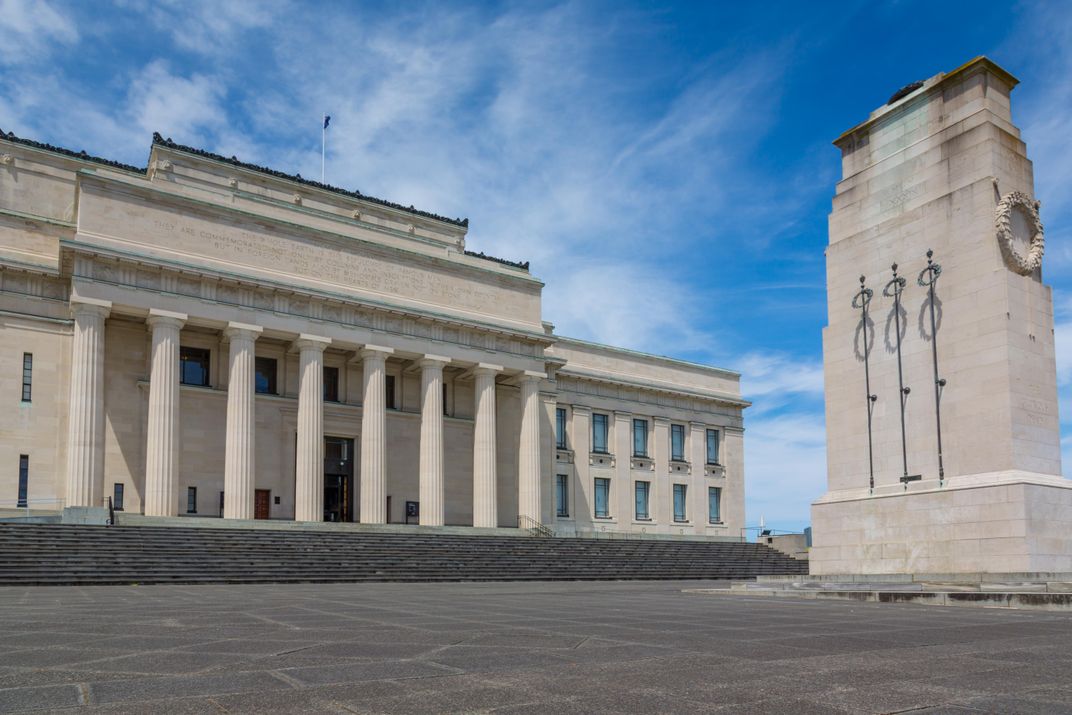
Built in the 1850s, and more generally known as the Auckland Museum, this houses extensive general collections on the whole of New Zealand’s history, not just military history. The modern annexe, which opened in 1929, was built in memory of Auckland province’s many war dead from World War I. The walls of the World War I Sanctuary are inscribed with the names of fallen soldiers with no known grave. Under the central stained-glass skylight are the badges of their units and regiments.
The War Memorial Galleries and Armoury information Centre present extensive collections and research facilities relating to the war, and frequent events, lectures and exhibitions are held in the museum, particularly around commemorative days. The database contains bibliographic records of the 35,000 New Zealanders killed in wars since the late 19th century.
Auckland
ROMANIA
Mausoleum of Marasesti
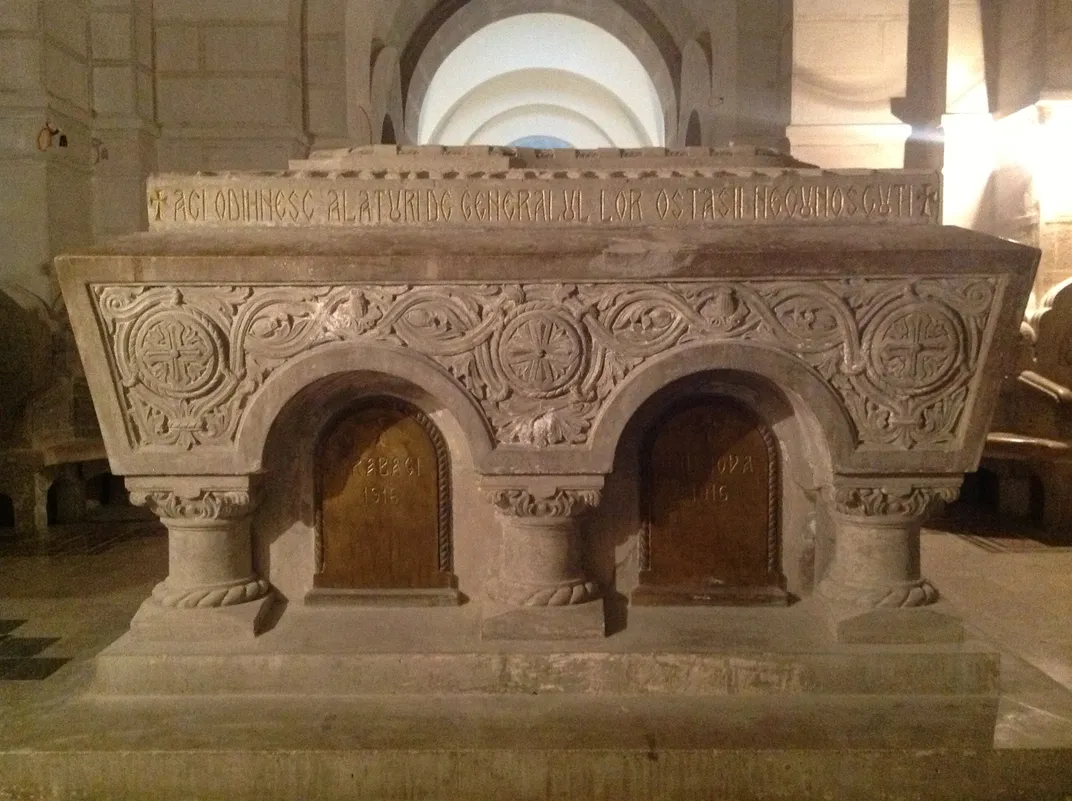
Built between 1923 and 1938, the Mausoleum for the Heroes from the National Unity War, to give it its full title, is an imposing monument to the Romanians killed in World War I. The Battle of Marasesti in 1917 was the last major battle on the Romanian front before the country was occupied. The mausoleum stands some 30 m (100 ft) tall and the remains of 6,000 Romanian soldiers are contained within the crypts. The mausoleum also includes the sarcophagus of General Eremia Grigorescu, who died in 1919, and a rotunda containing the flags of the Romanian units who fought at Marasesti. The main edifice is topped by the “Dome of Glory”. A great bas-relief on the dome depicts scenes from the battle at Marasesti.
Between Focsani and Adjud, Vrancea County.
TURKEY
Gallipoli Battlefield
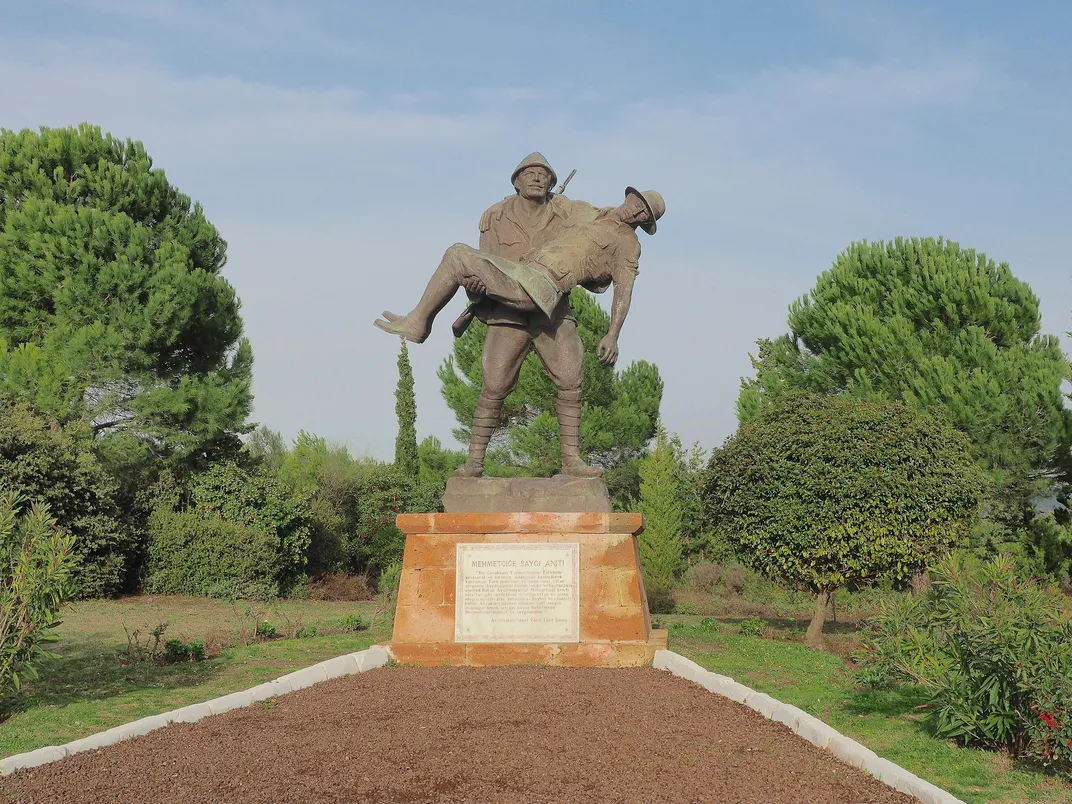
The Gallipoli Peninsula Historical National Park is one of the most rewarding sites for military history tourists and researchers. Covering around 33,000 hectares (81,500 acres), it includes 31 CWGC cemeteries, containing 22,000 graves, most of them easily accessible, and numerous memorials.
There are three main areas of interest: Cape Helles (V-Beach Cemetery, Helles Memorial and Redoubt Cemetery); Pine Ridge (the Beach Cemetery, No. 2 Outpost Cemetery, Courtney’s and Steel’s Post Cemetery, Chunuk Bair Cemetery and Memorial, Fourth Battalion Parade Ground Cemetery and Lone Pine Cemetery and Memorial); and Suvla (Green Hill Cemetery and Anzac Cemetery). The main sites can be covered in a day, but two to three days are recommended for a more thorough exploration. Also worth seeing on Cape Helles is the Canakale Martyrs Memorial, the principal memorial to the Turkish dead of Gallipoli.
Special services are held at Gallipoli on Anzac Day on 25 April, commemorating the first day of the Gallipoli Campaign in 1915 when Australian and New Zealand troops landed at Anzac Cove.
Gallipoli peninsula
THE UNITED KINGDOM
Brookwood Military Cemetery
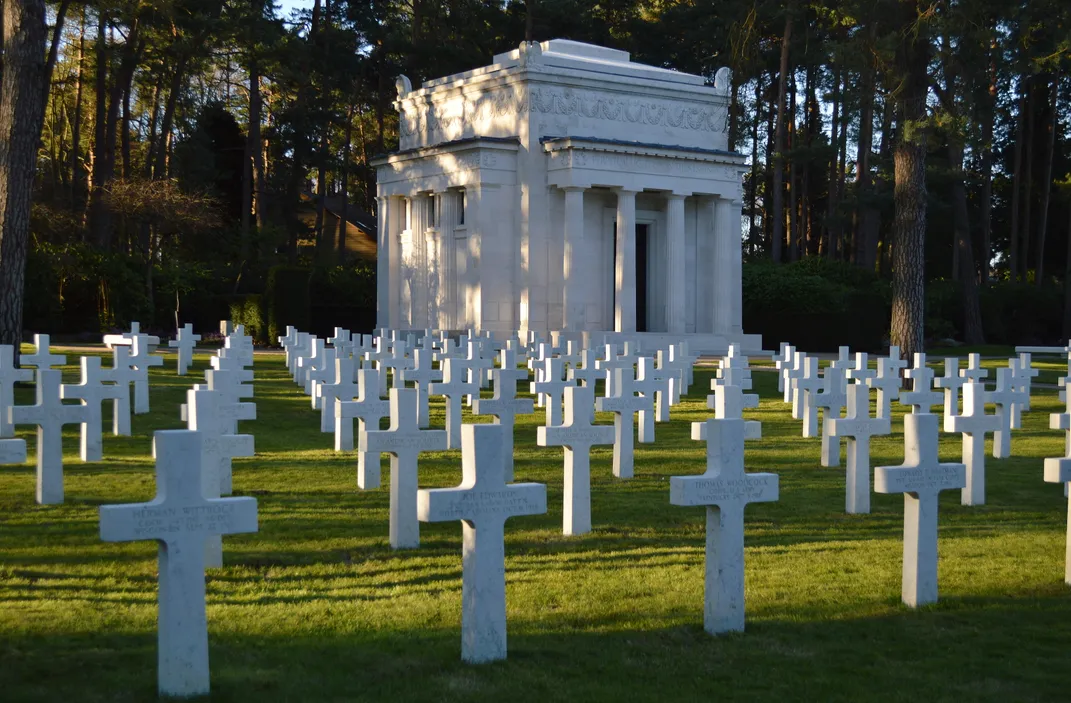
This cemetery predates World War I, but land for war burials was granted in 1917, mainly to accommodate the graves of service personnel who had died of battle wounds in the London district. It is now the largest Commonwealth military cemetery in Britain. Although most of the burials are from 1939–1945, there are 1,601 graves dating from World War I. The Brookwood 1914–18 Memorial commemorates more than 200 Commonwealth casualties who died during World War I but for whom no graves could be found. In the grounds of Brookwood, the World War One American Military Cemetery has 468 graves and commemorates 563 US servicemen with no known grave.
Brookwood, Surrey
UNITED STATES
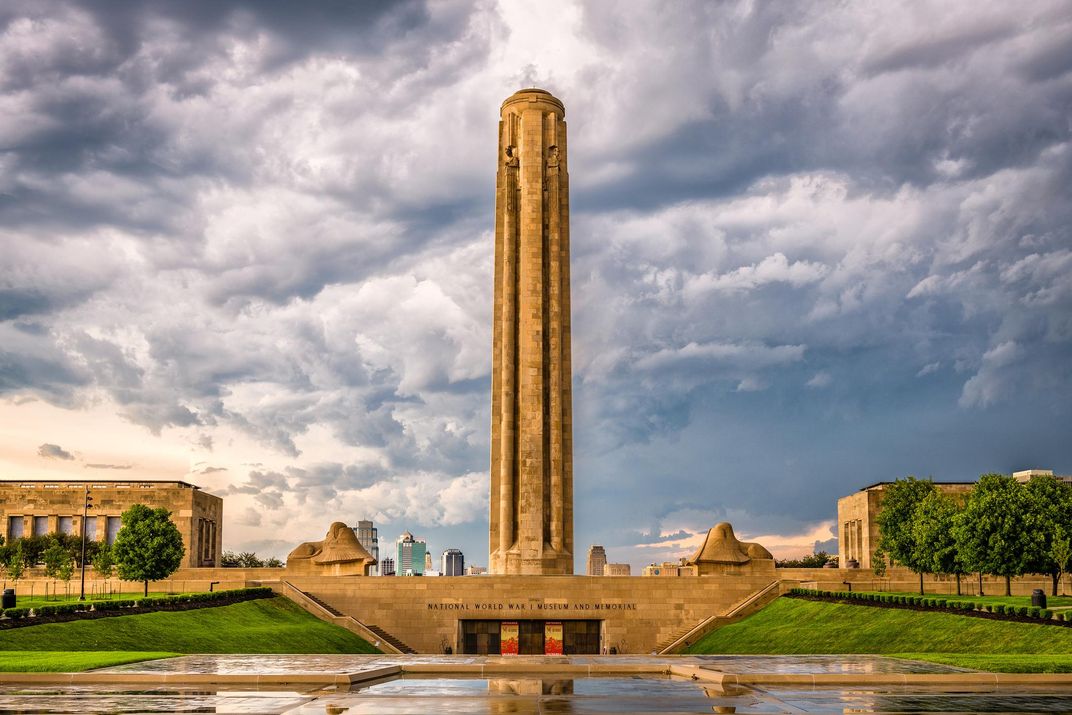
This towering monument in Kansas City is the national World War I memorial of the United States. Dedicated by President Calvin Coolidge on November 11, 1926, it was designed in Egyptian Revival style by Harold Van Buren Magonigle, who won the commission in a competition set up by the American Institute of Architects.
The site's centerpiece is the 217 ft. Memorial Tower. Its four figures represent courage, honor, sacrifice and patriotism. At night, a jet of steam illuminated by orange light emanates from the tower, giving the appearance of a burning pyre. The Great Frieze wall depicts the transition from war to peace, while another memorial wall features bronze busts of five Allied leaders present at the dedication of the memorial.
The memorial's accompanying museum, which opened in 2006, is one of the finest centers of World War I research in the United States. In addition to extensive displays of documents and photographs, exhibits include a Renault FY-17 tank, replica trenches, Paul von Hindenburg's field jacket and propaganda posters.
Kansas City, Missouri
